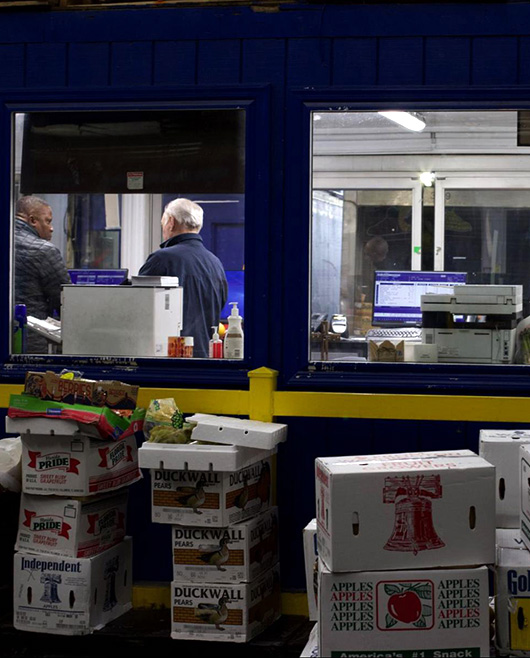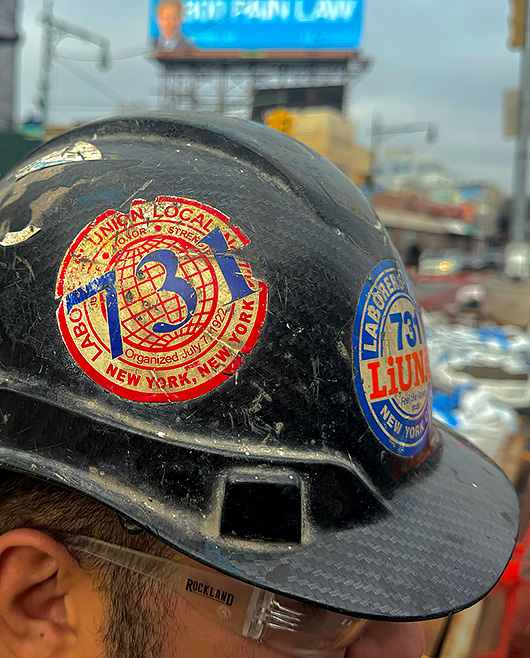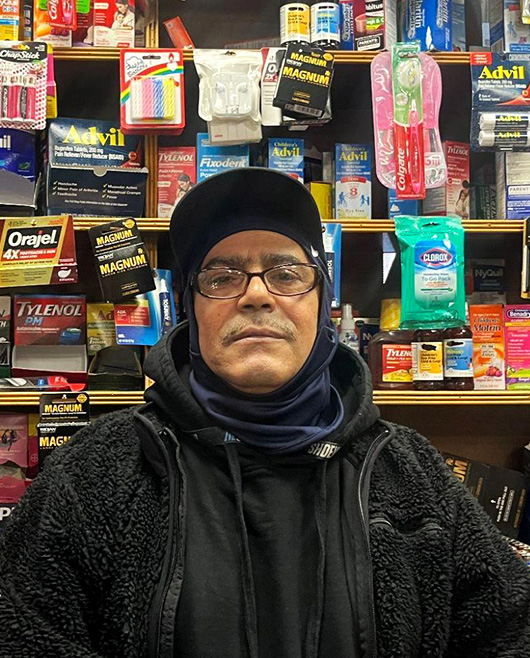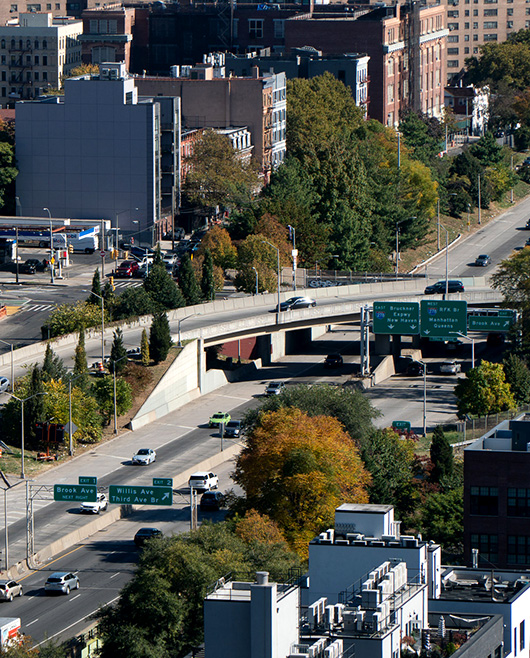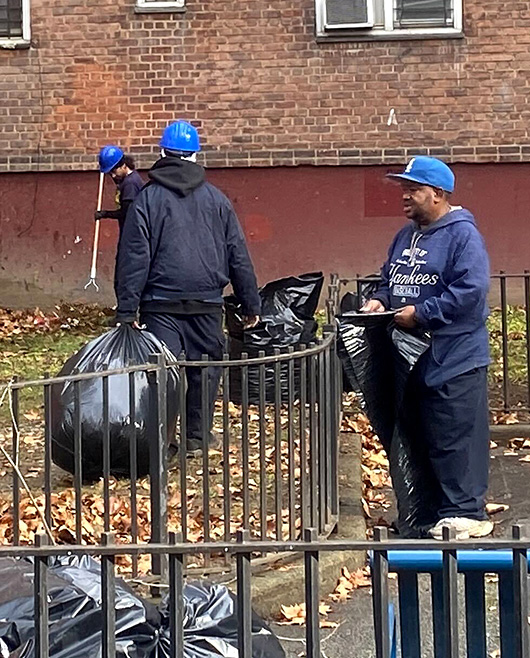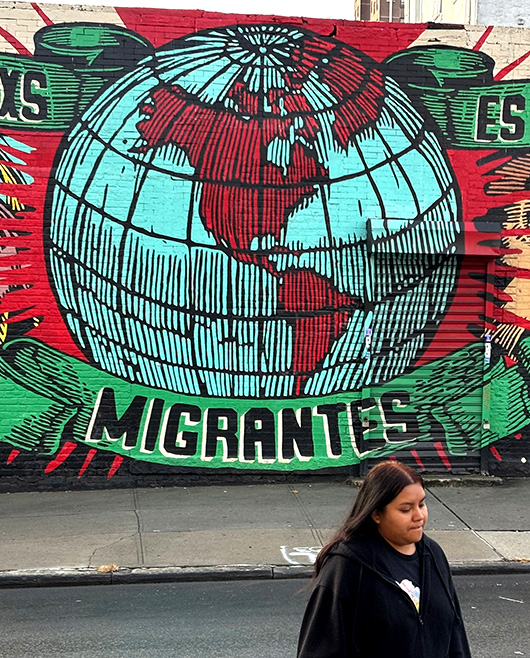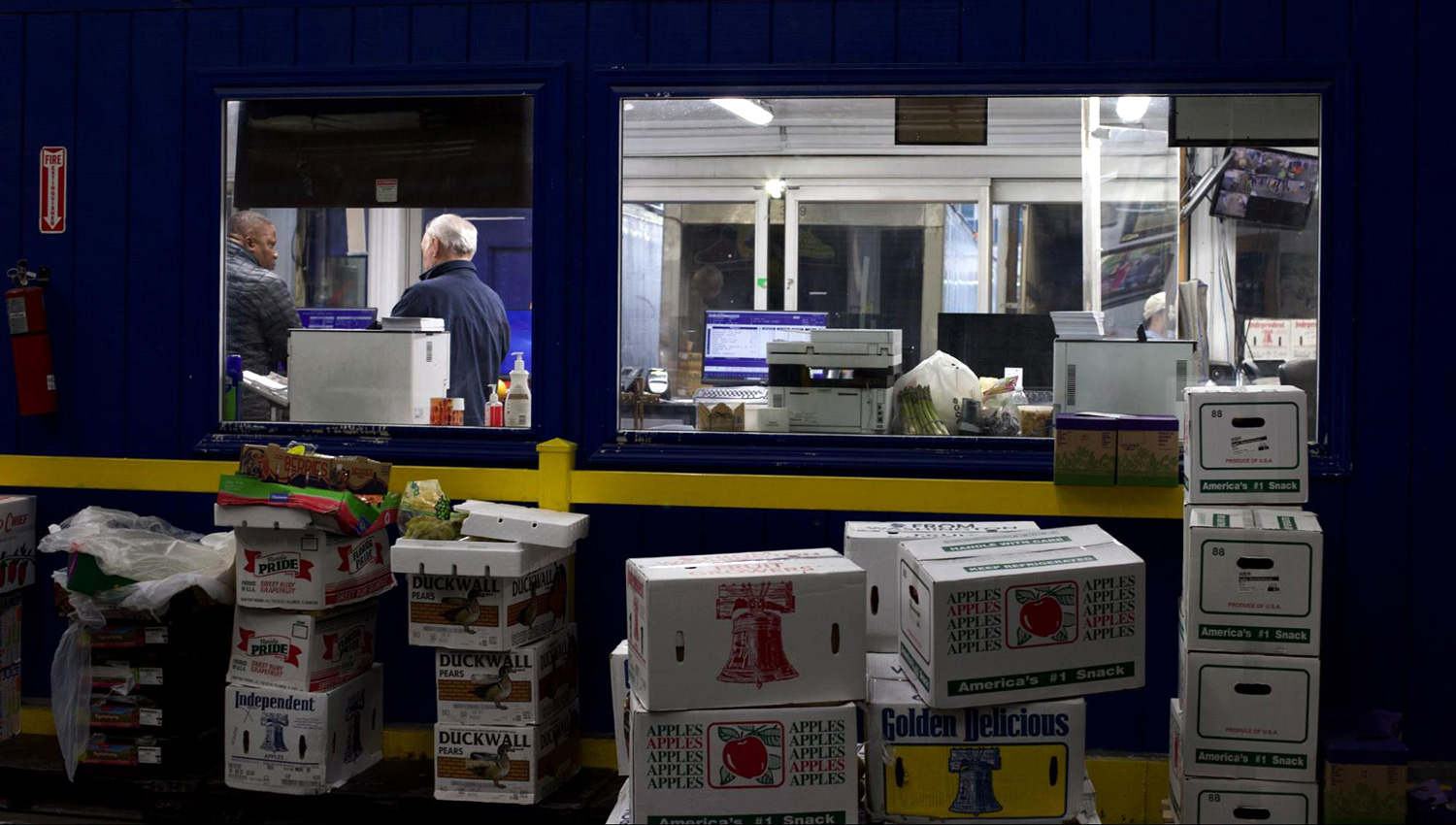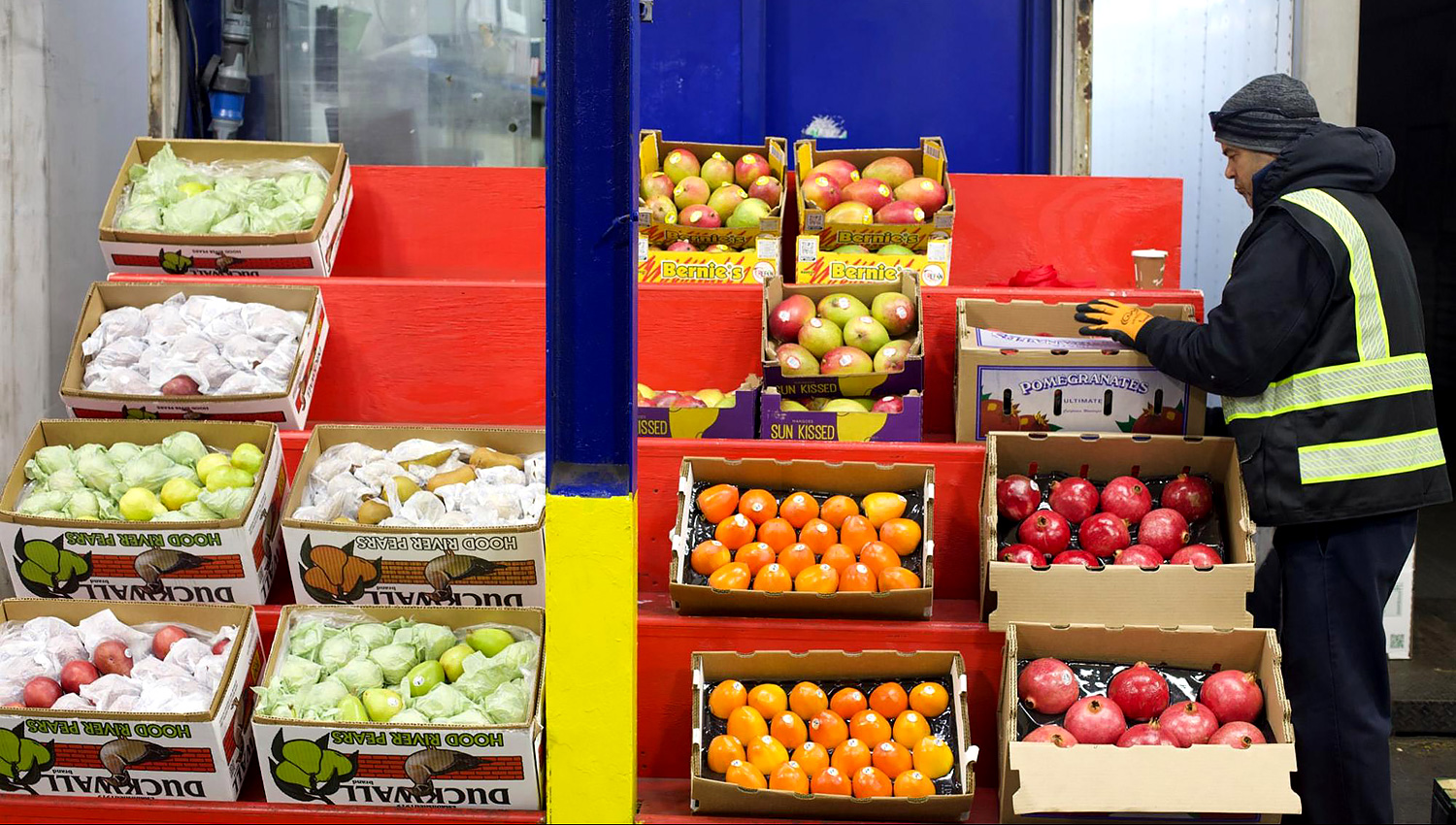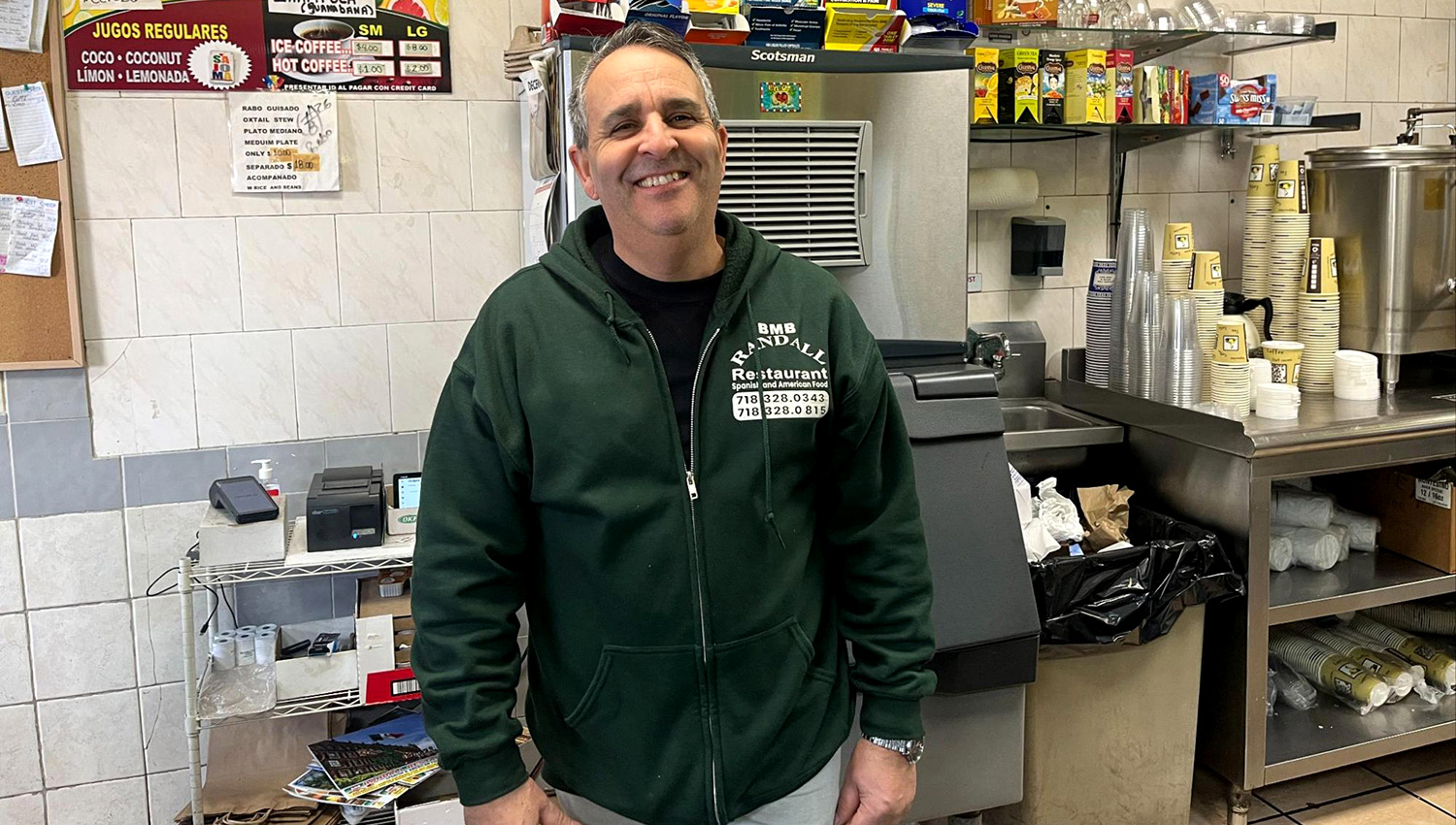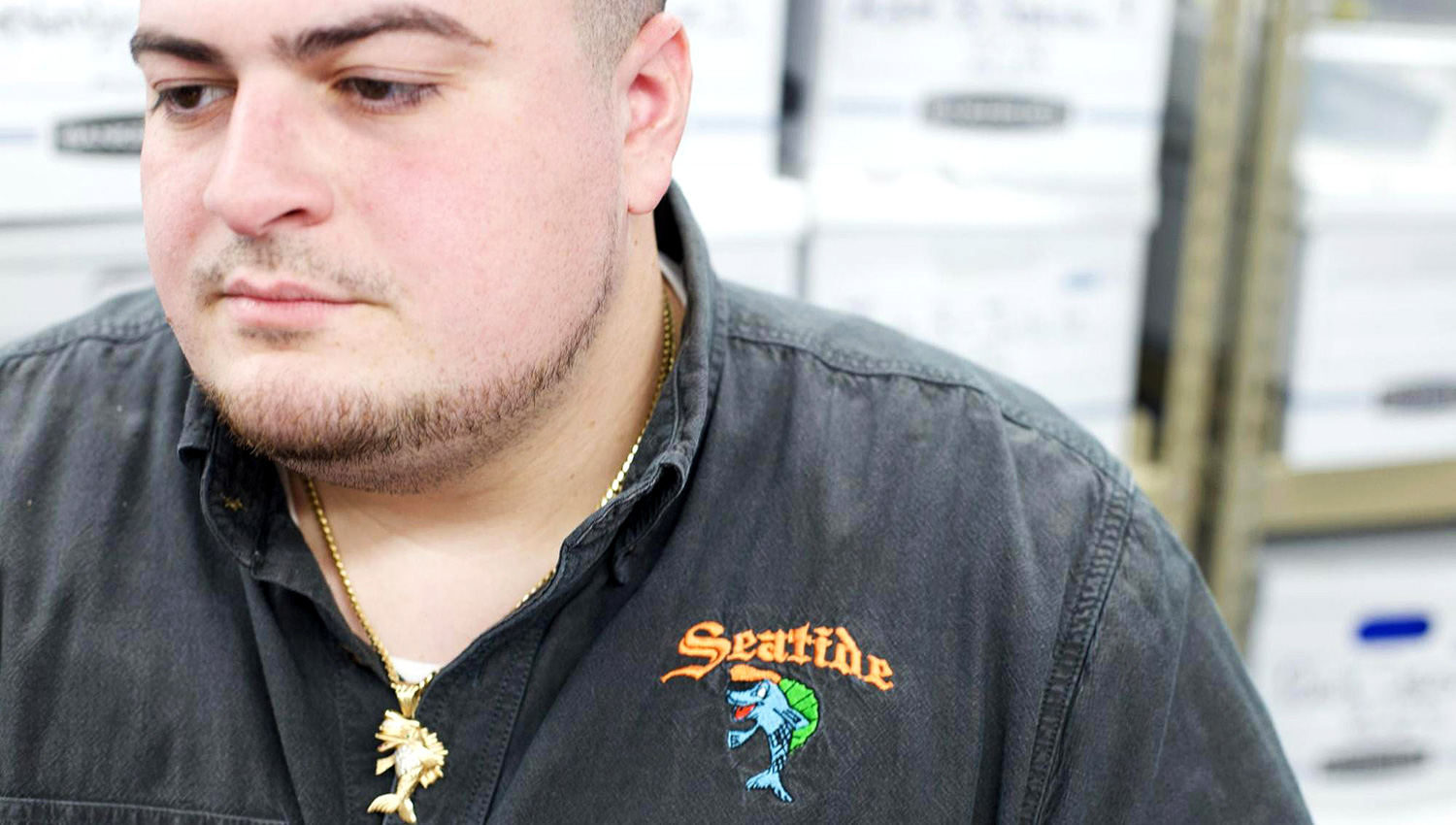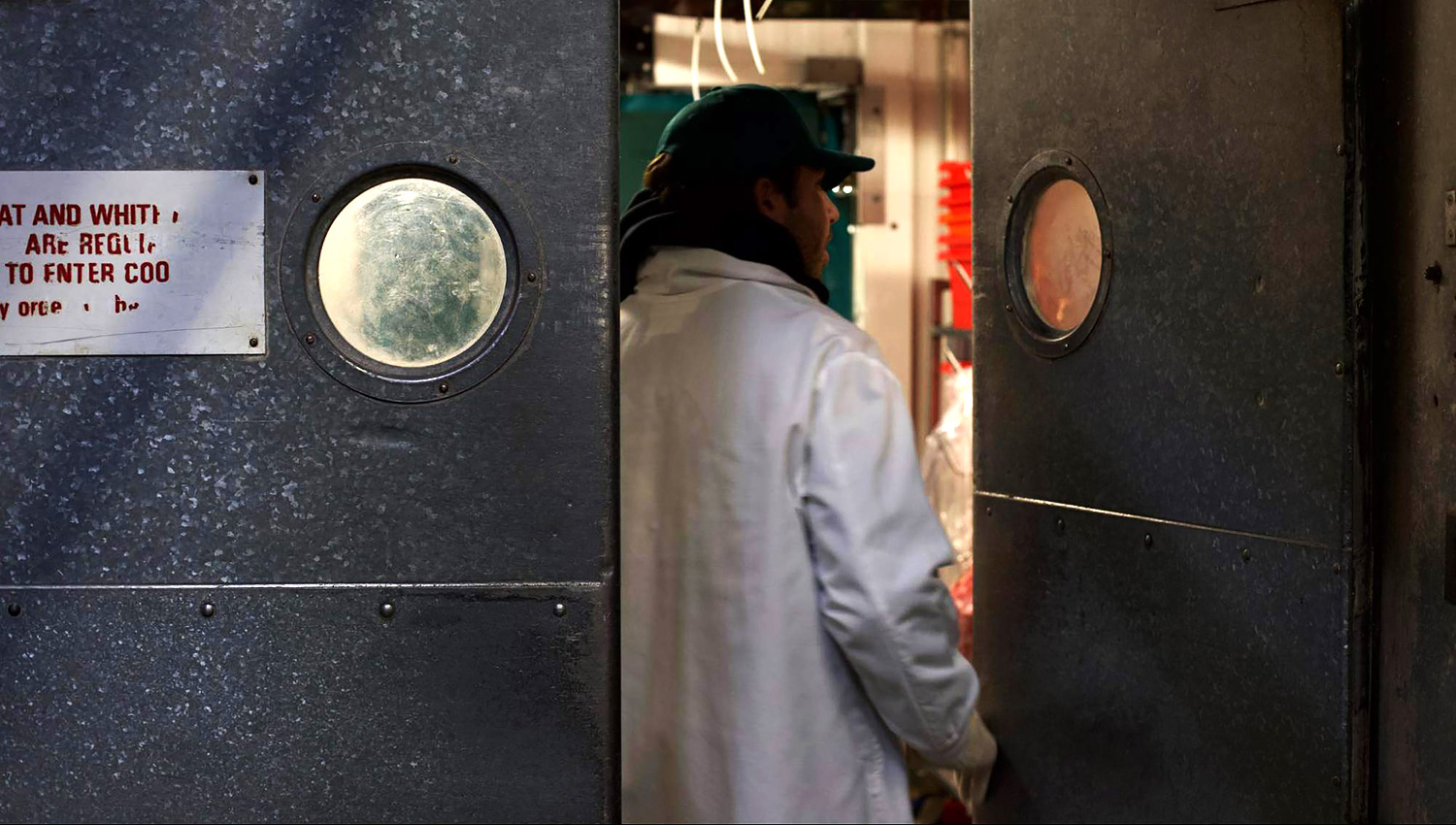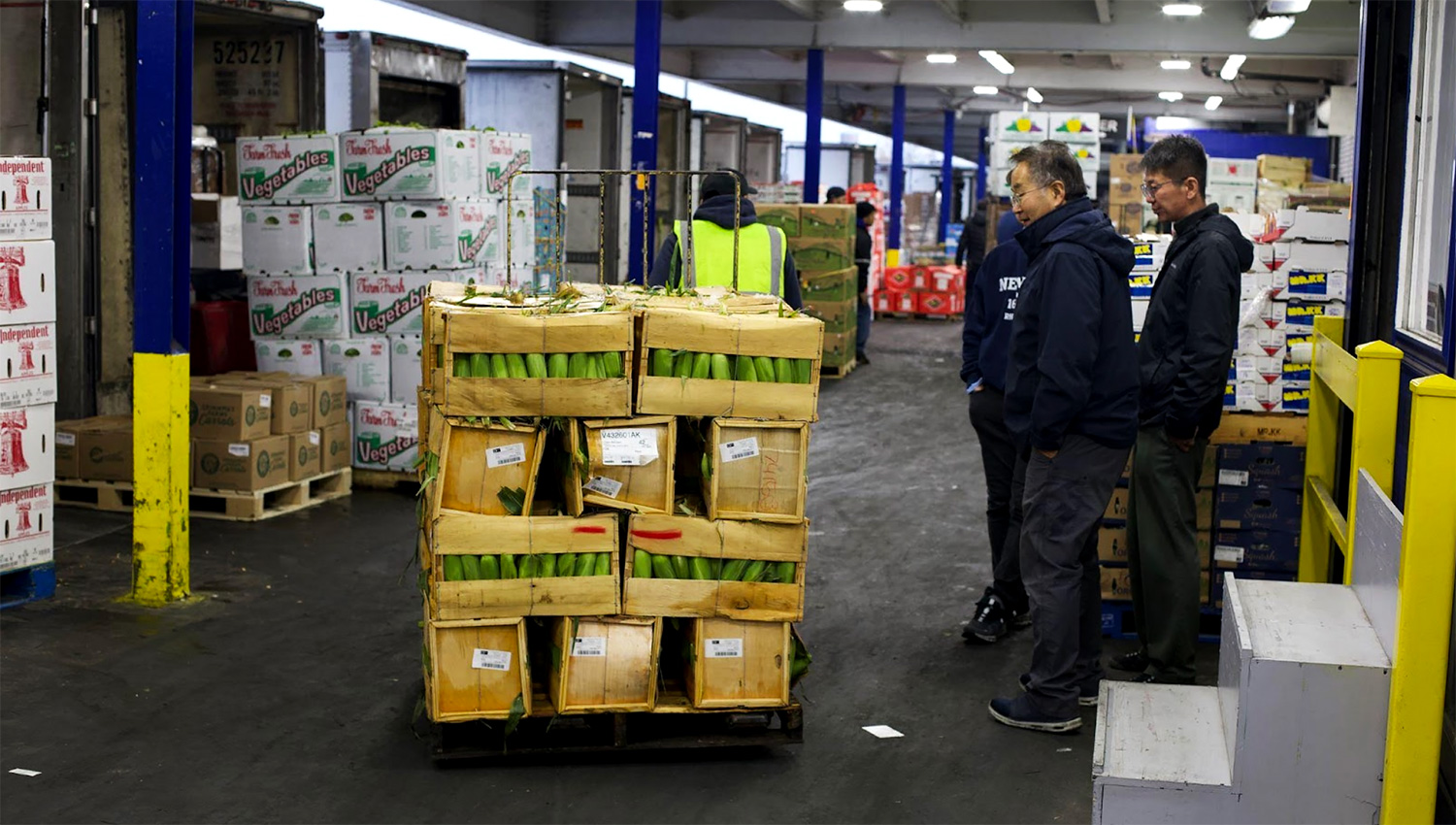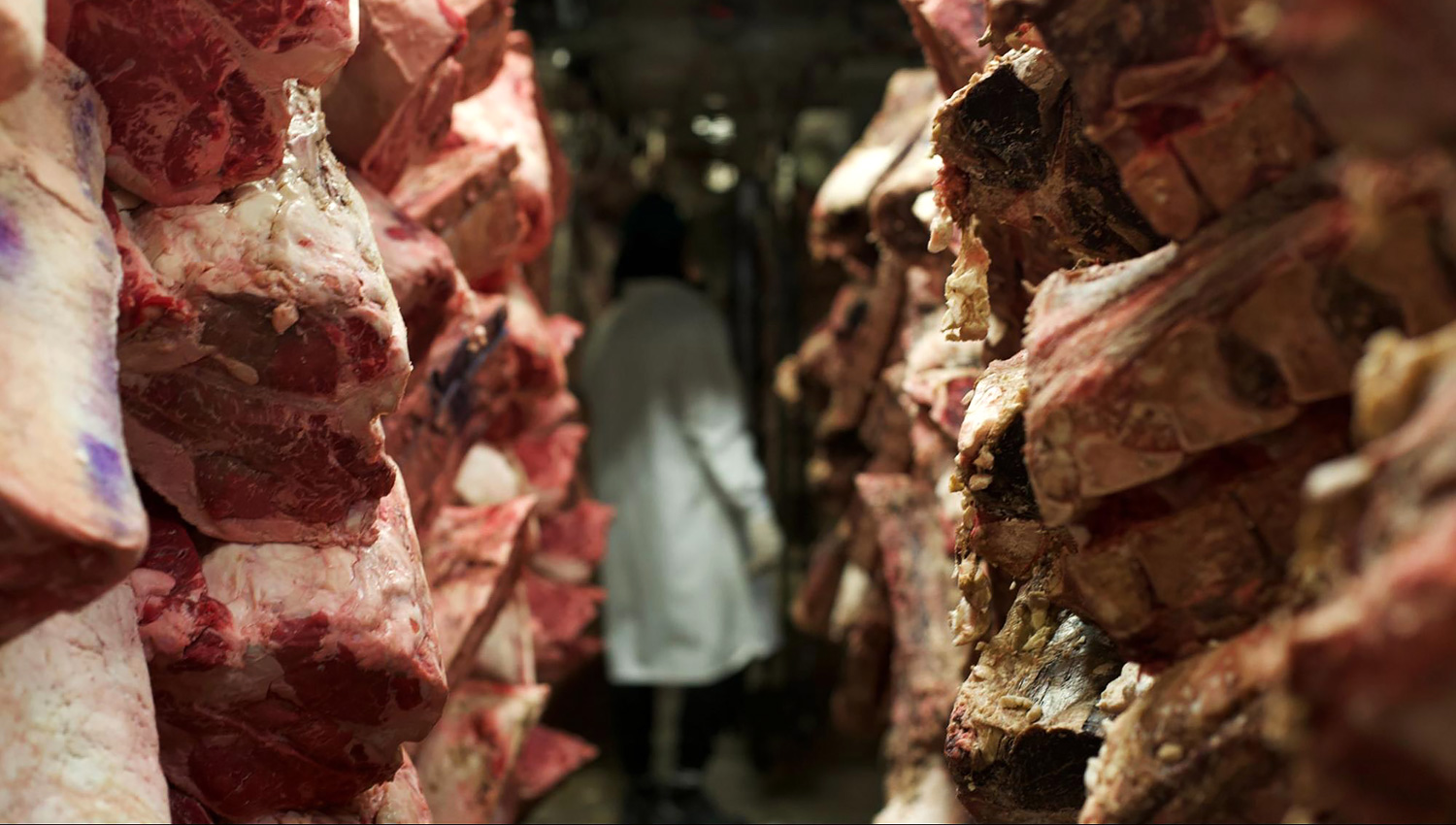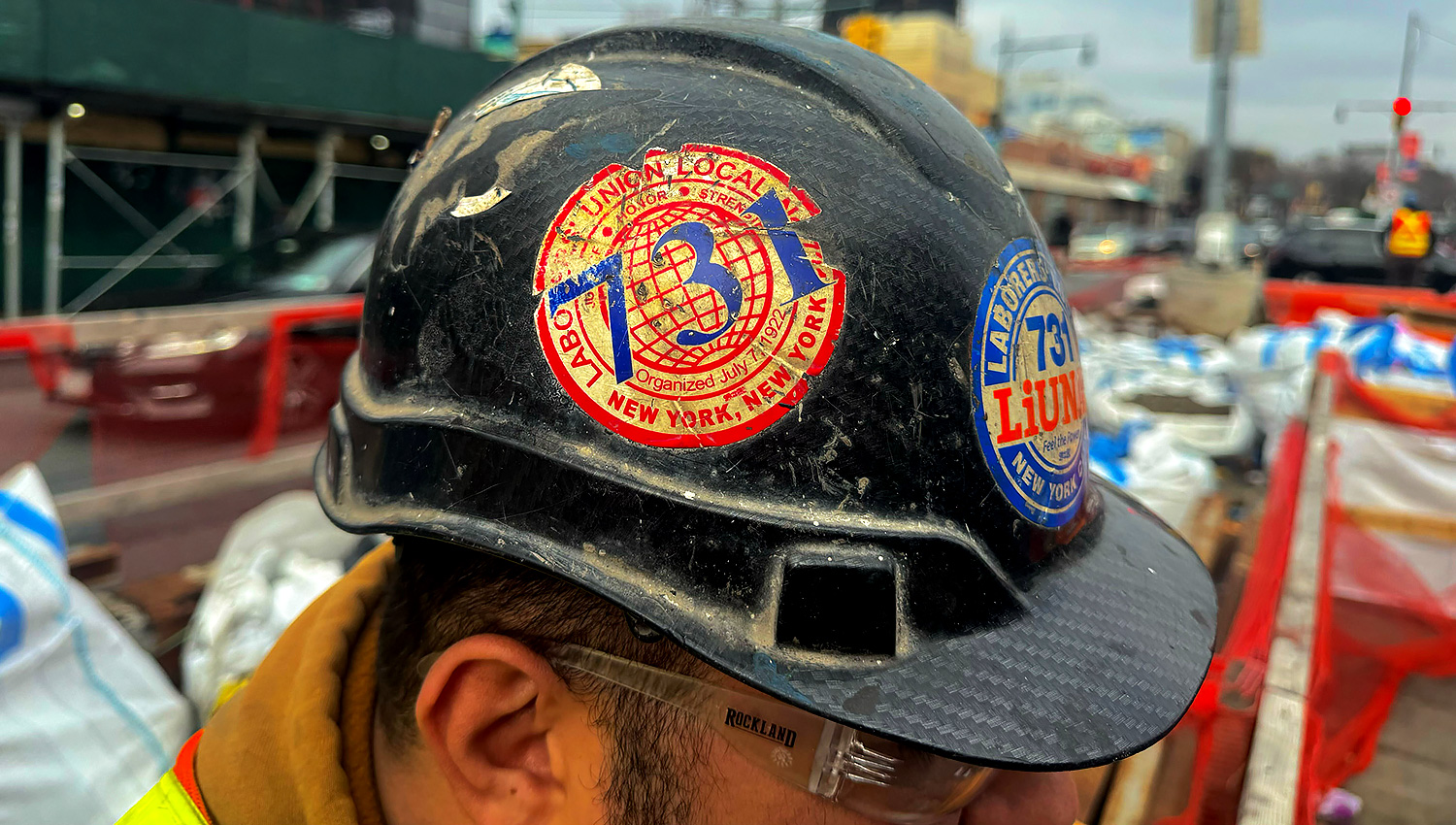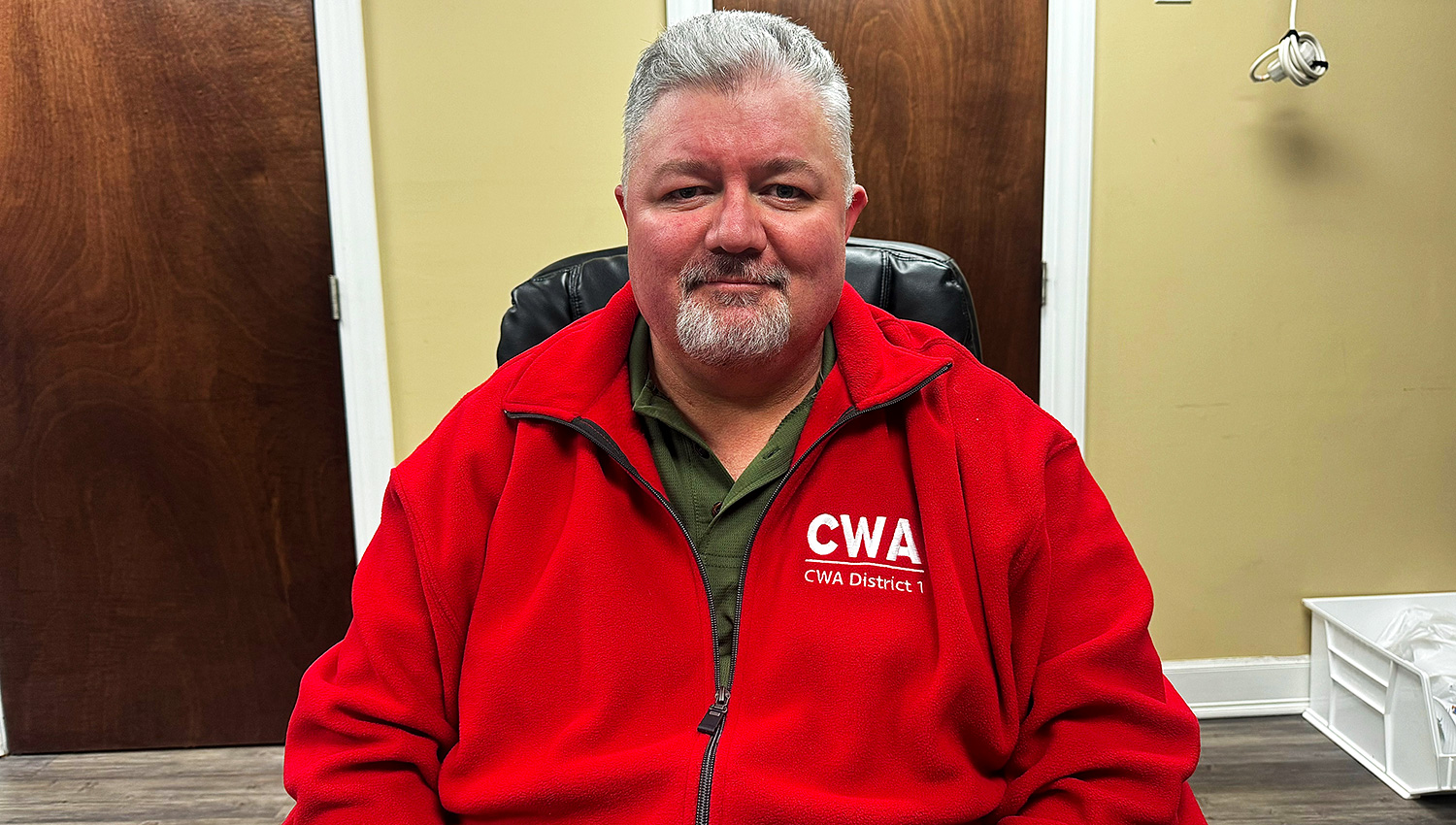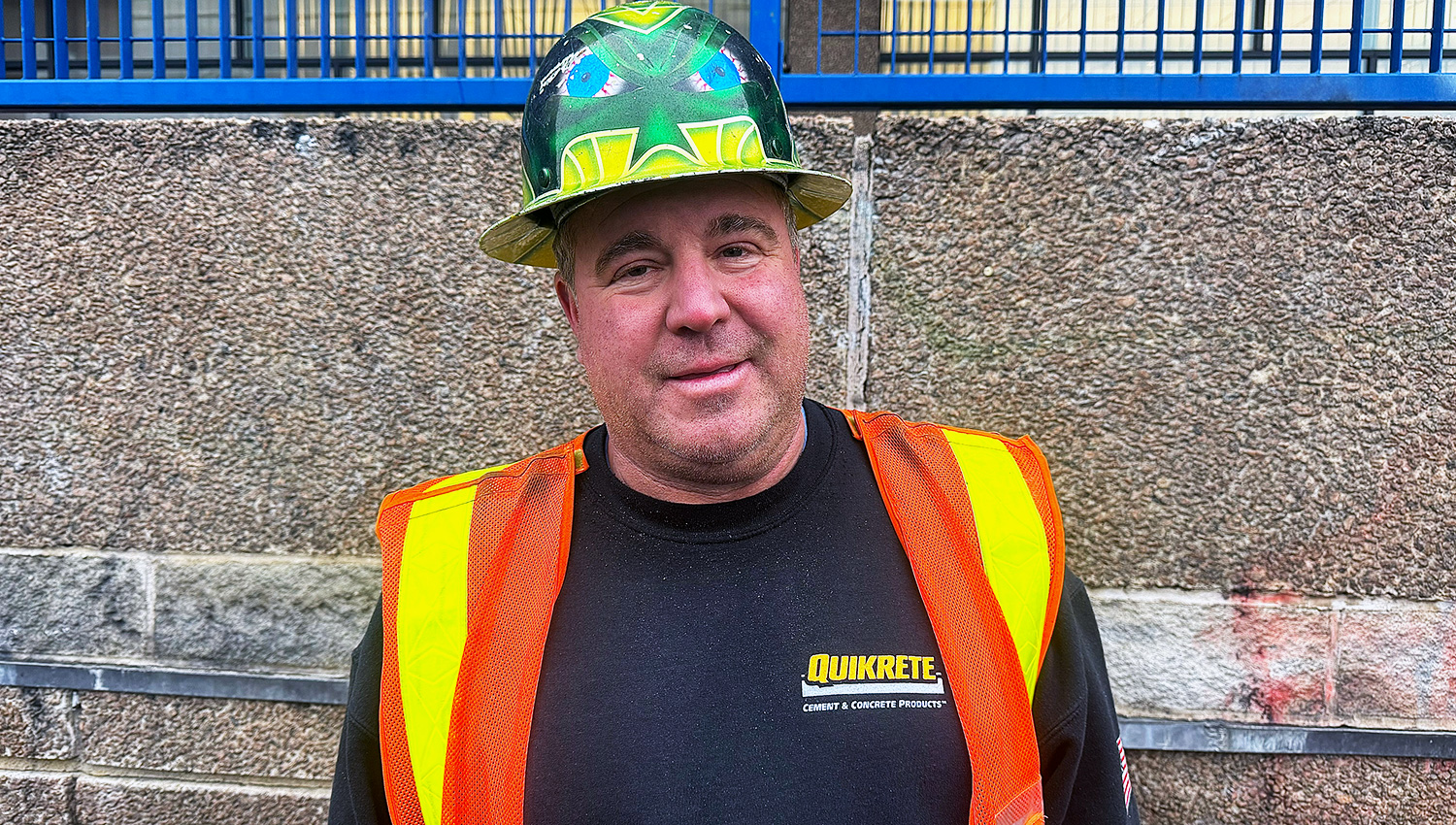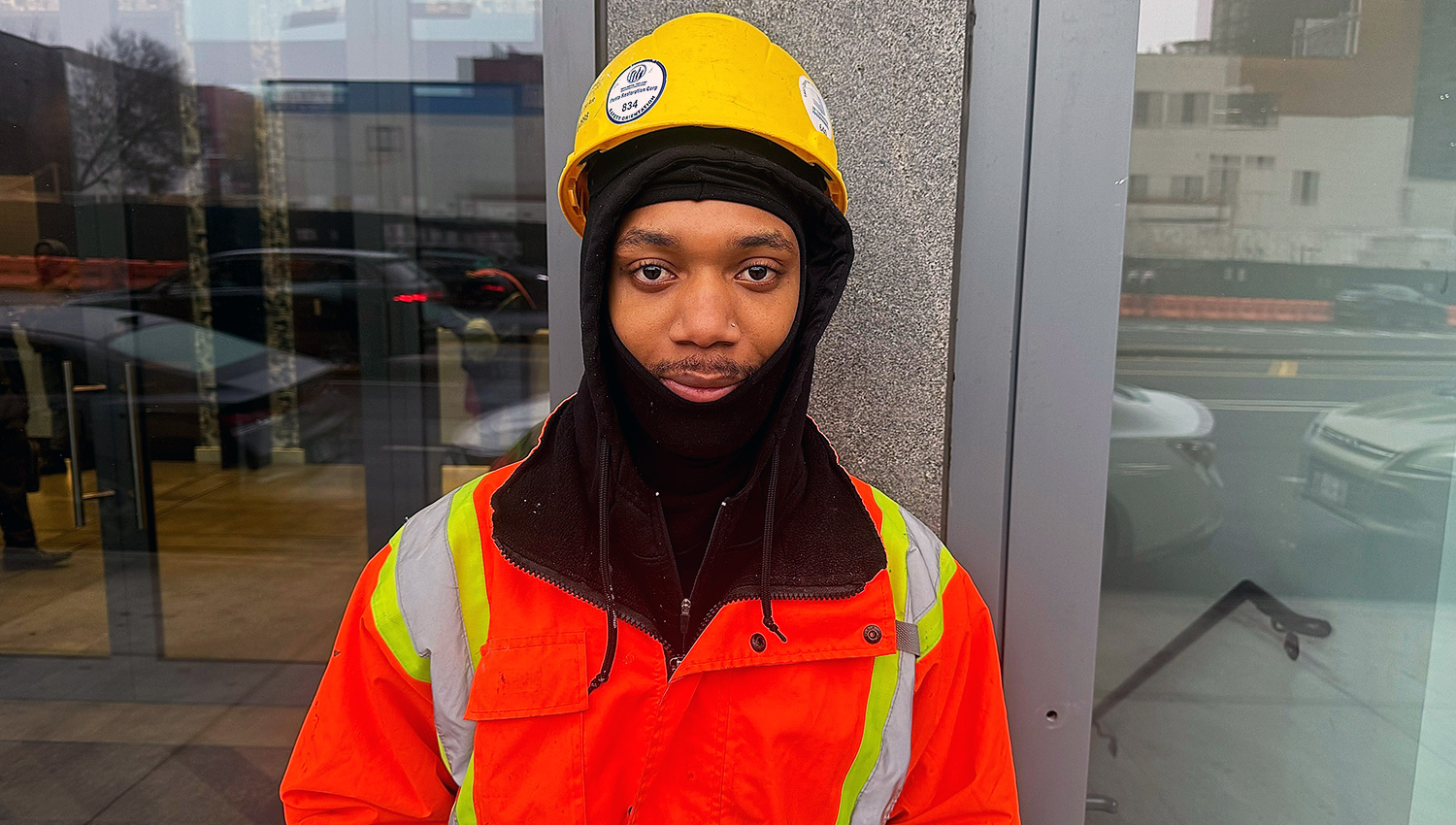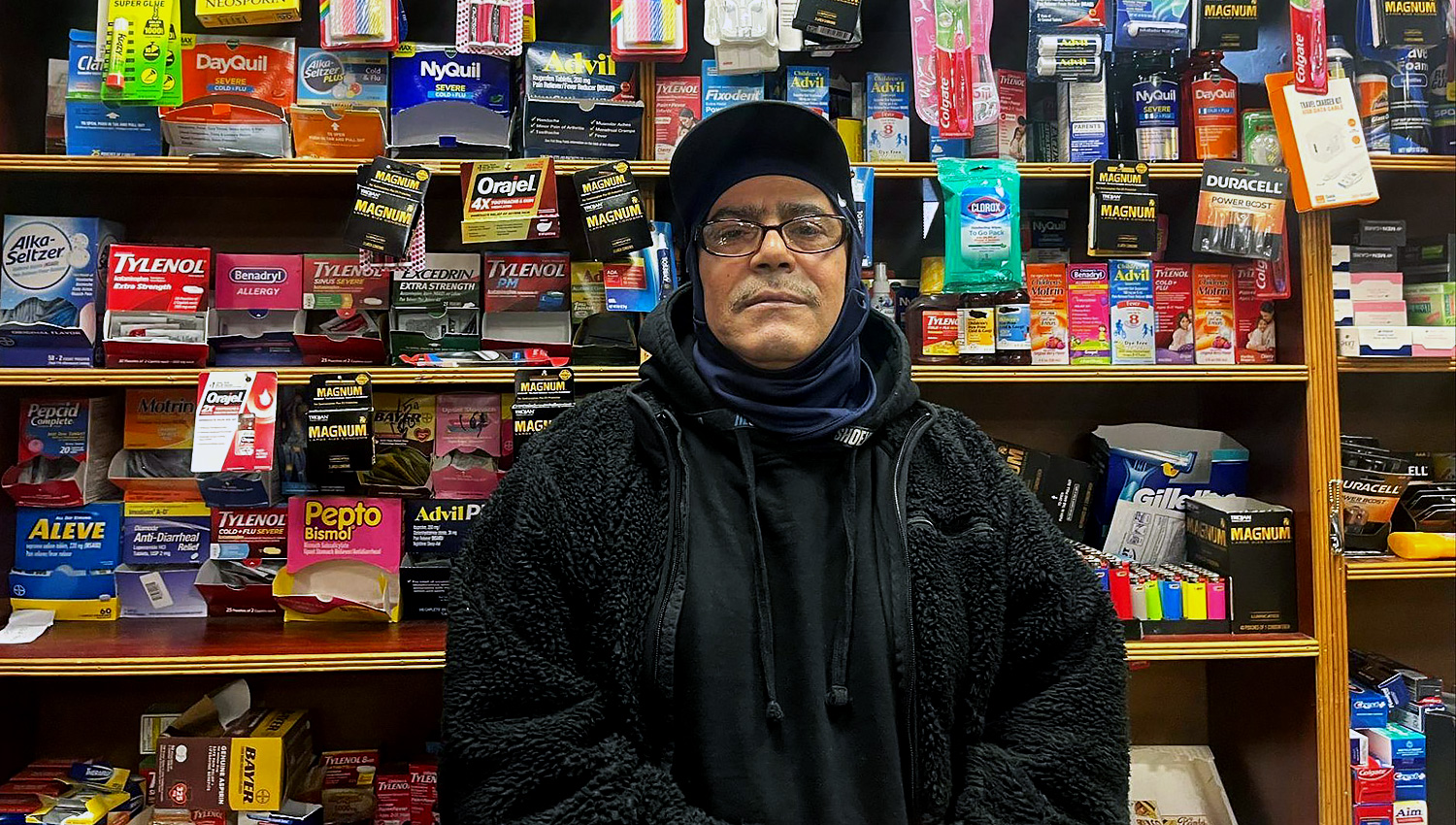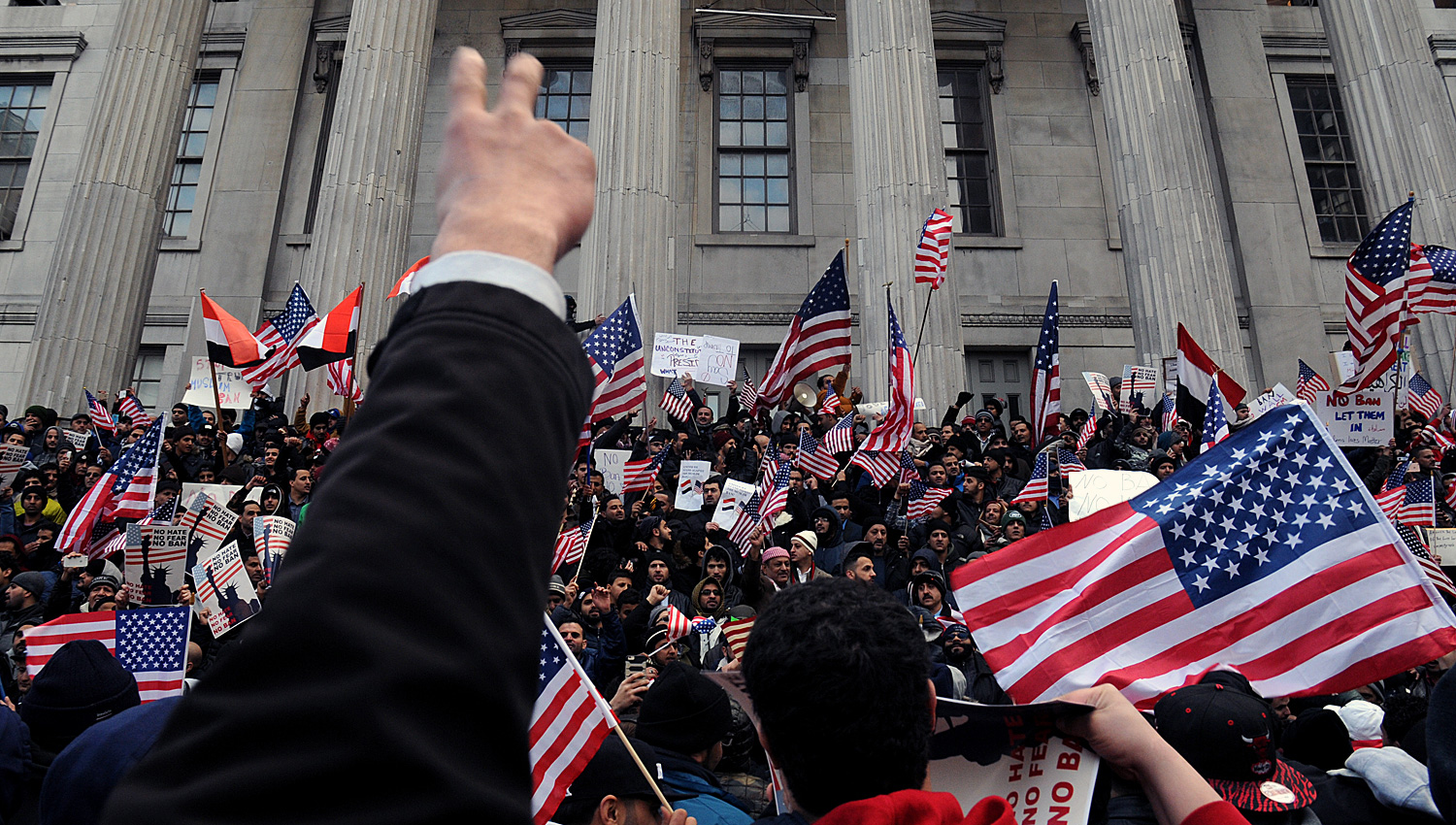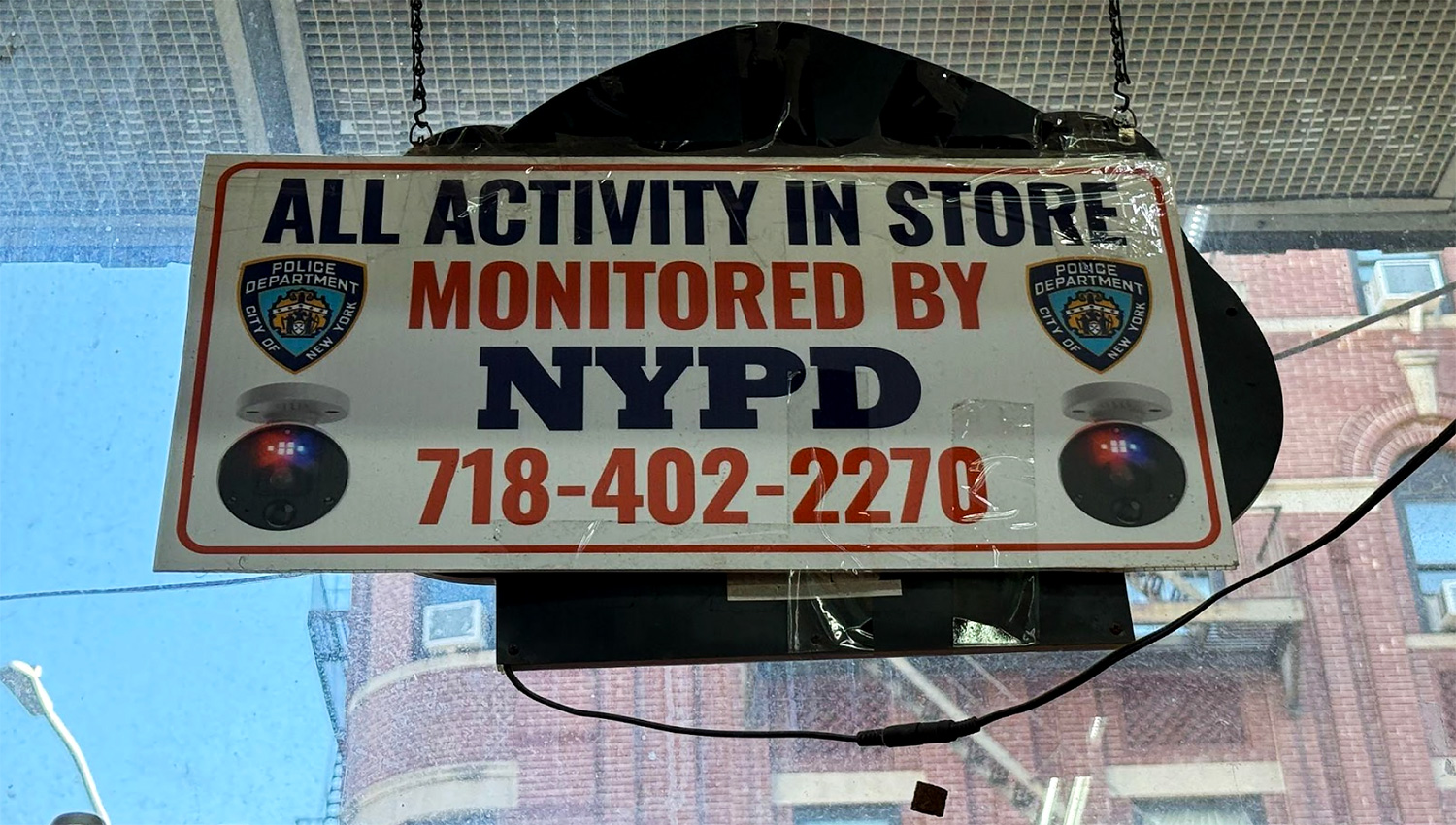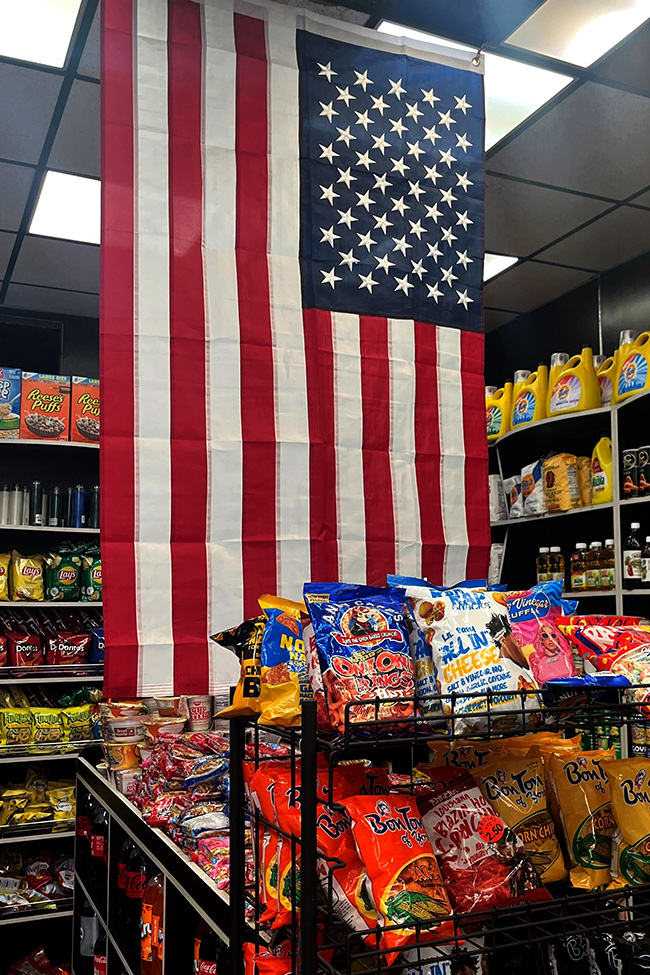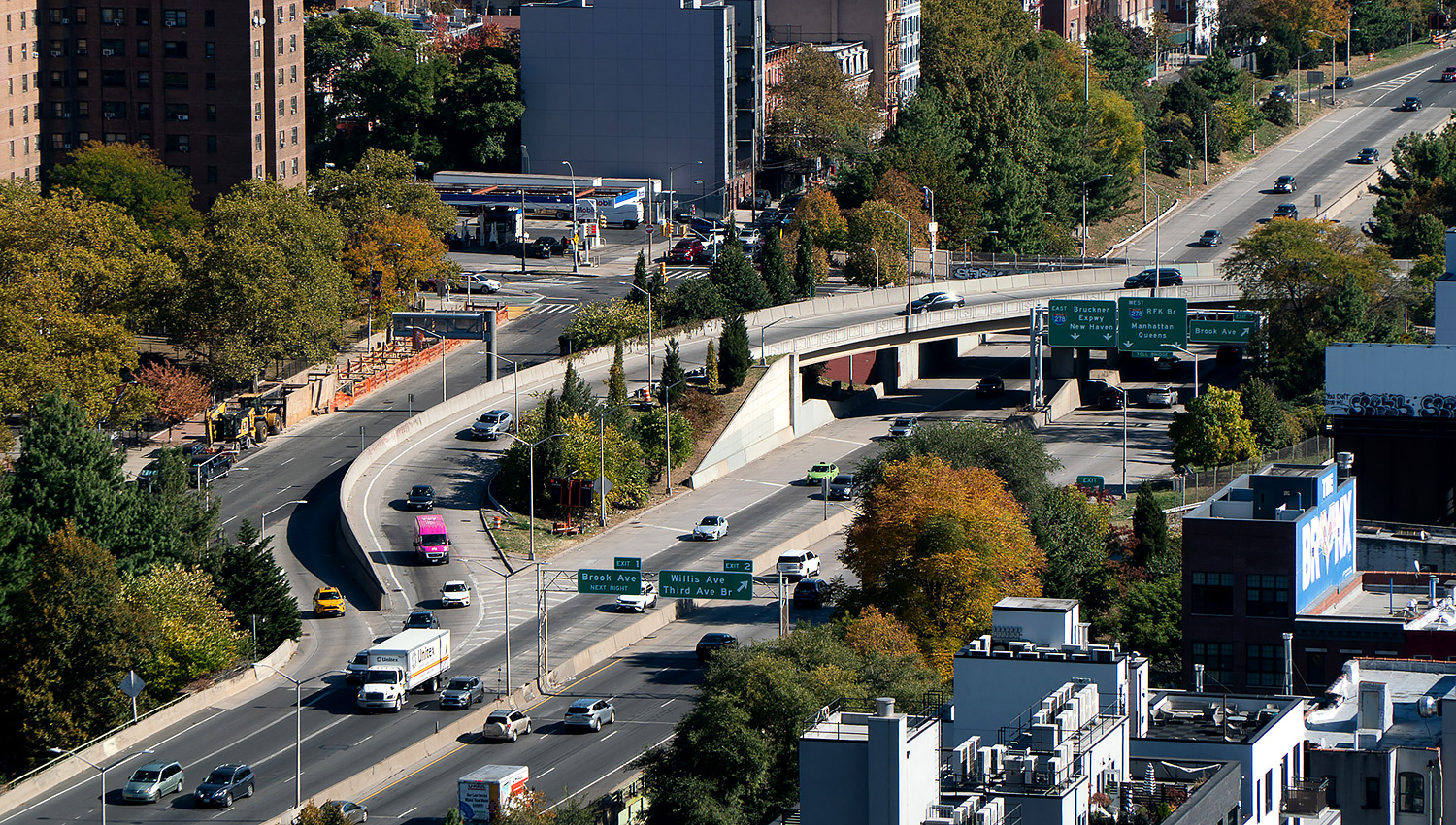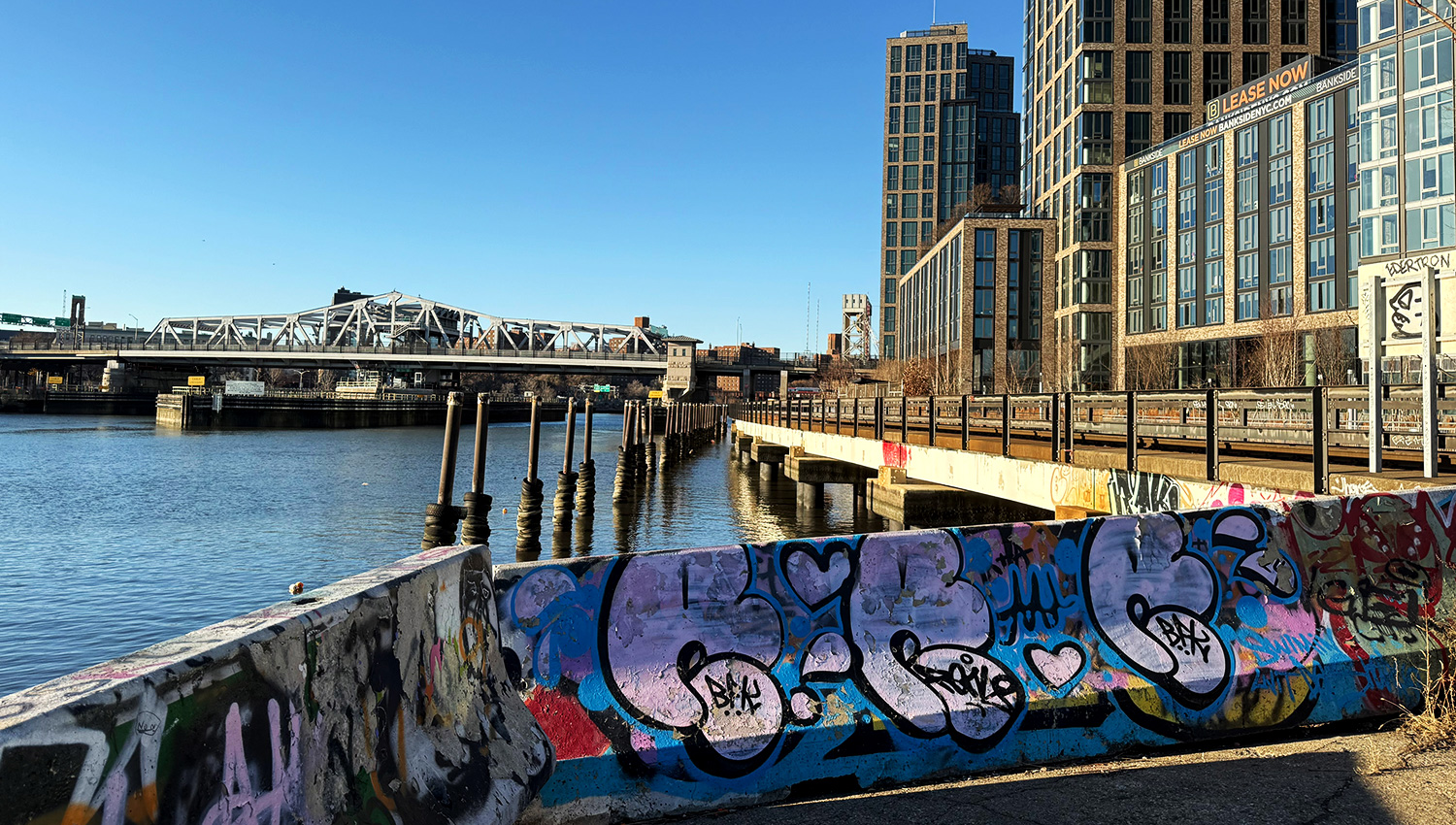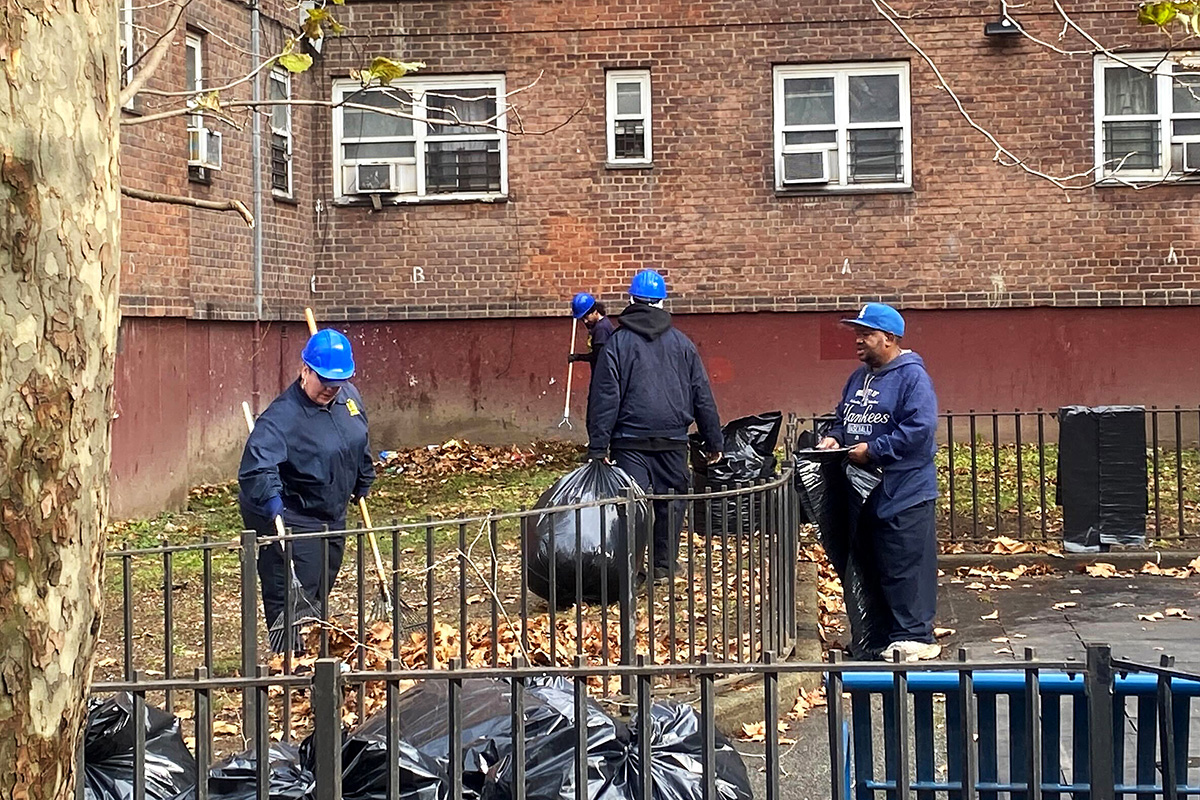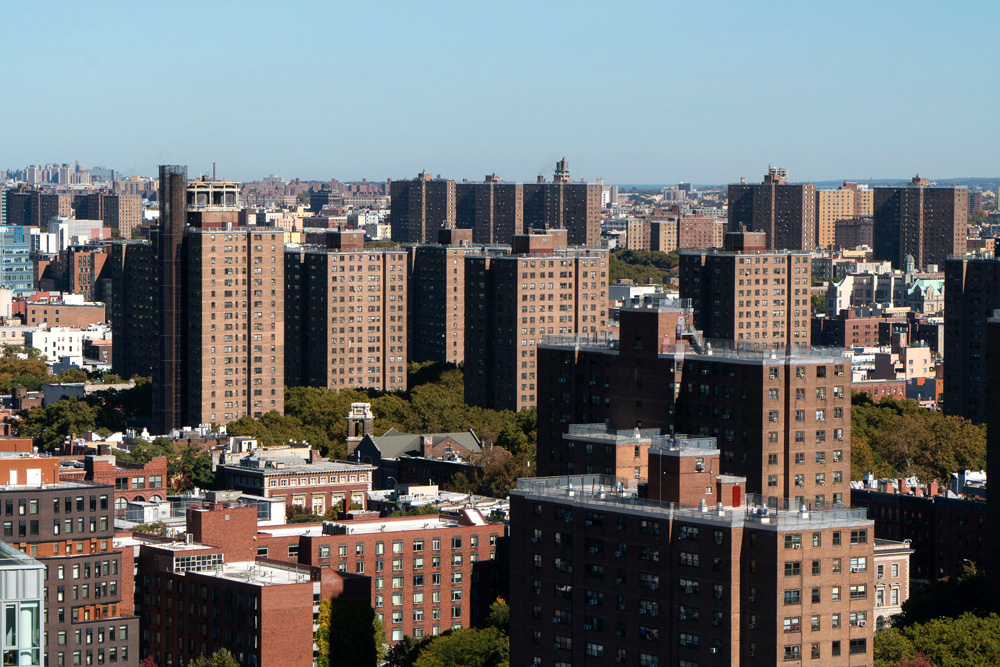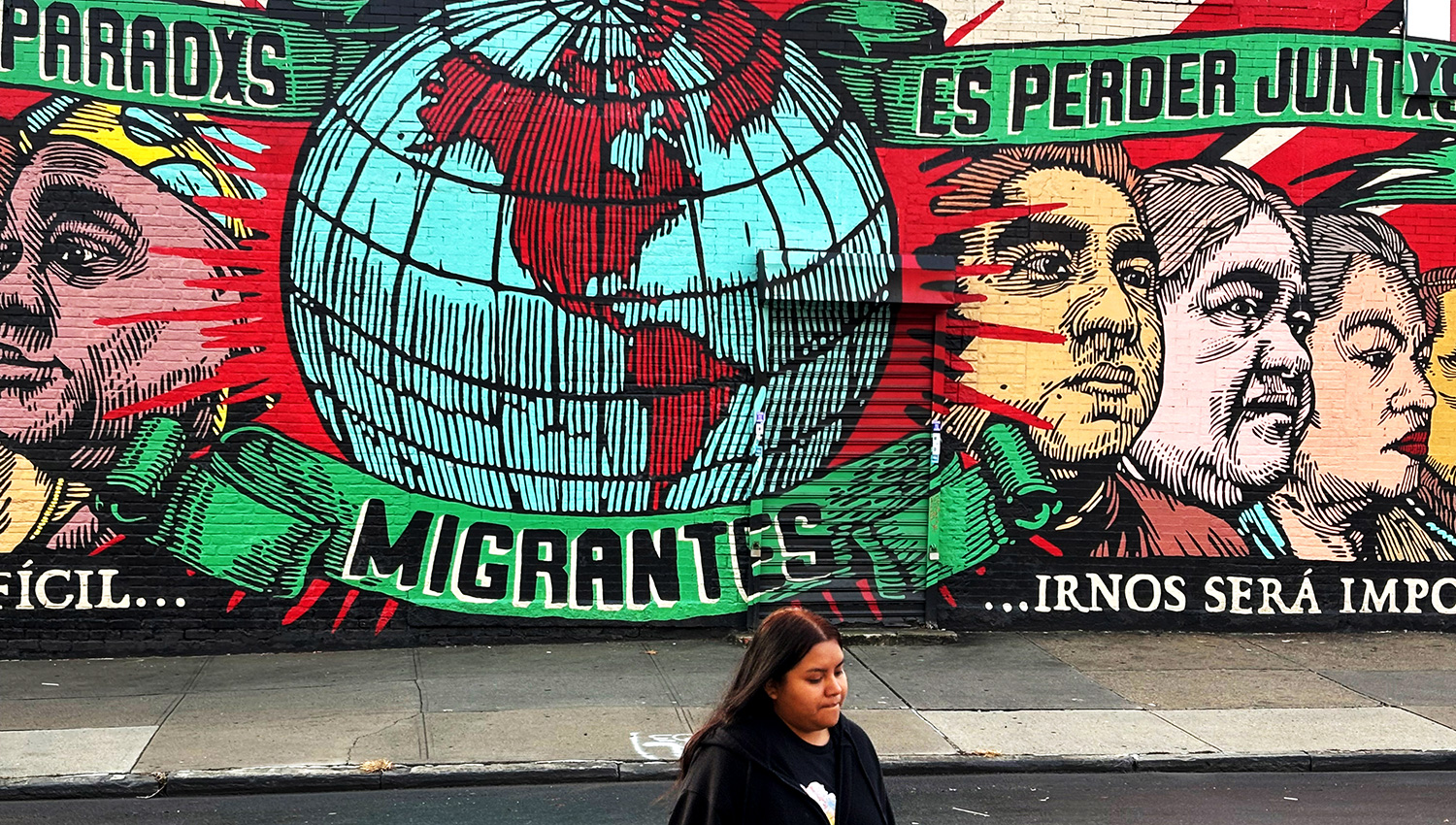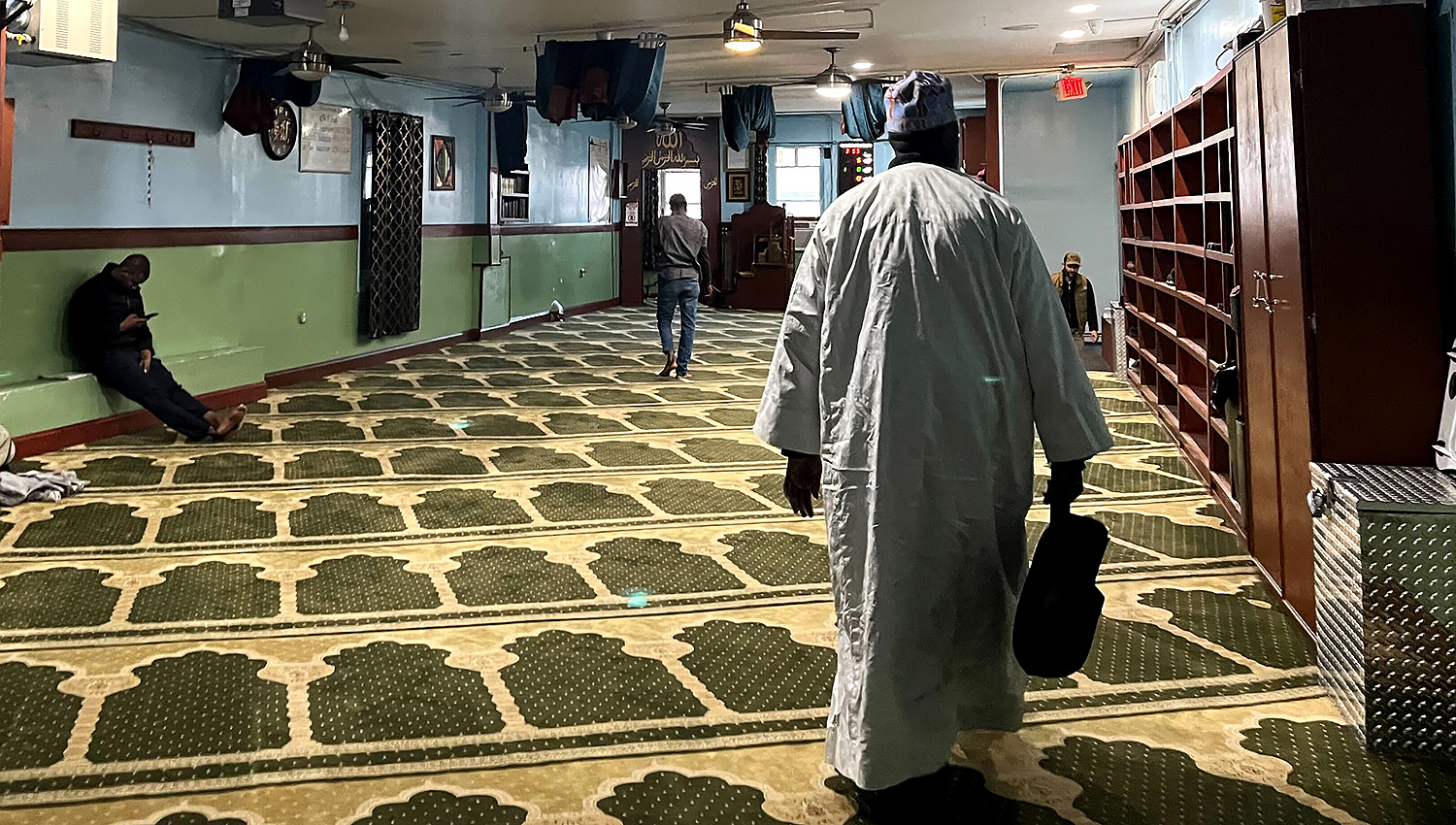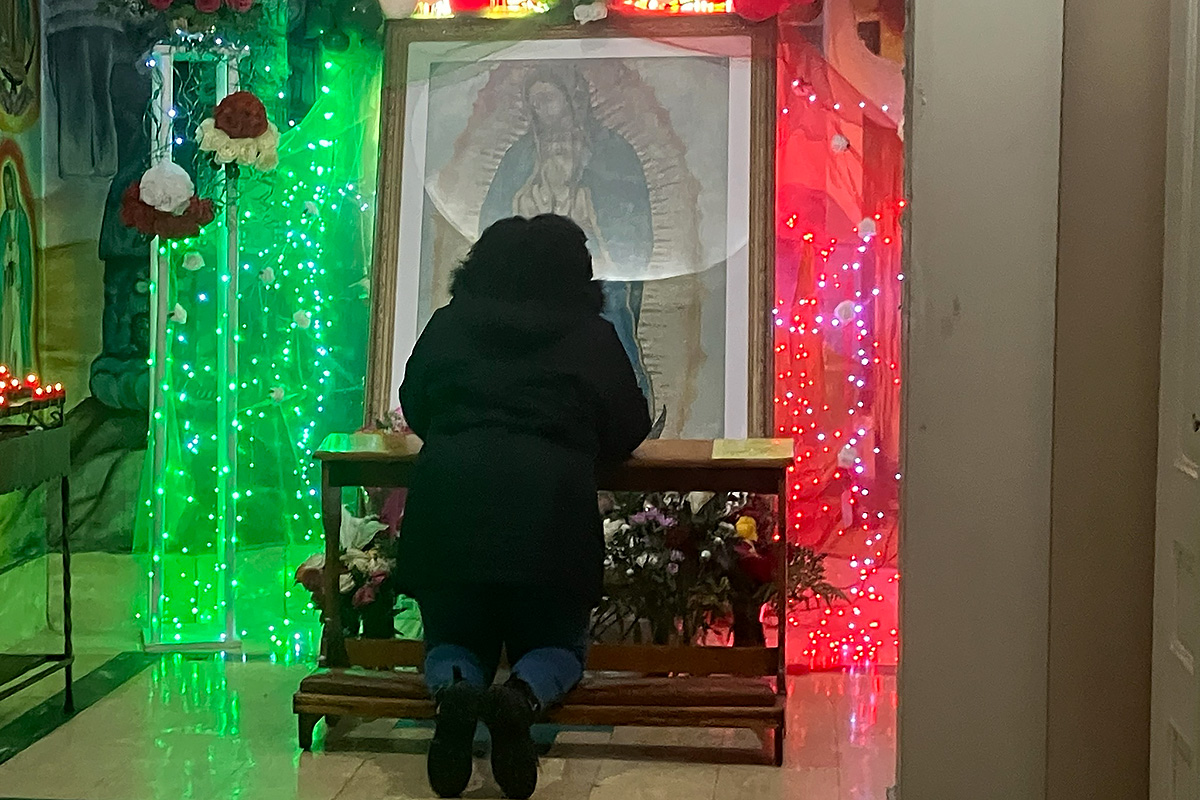Democrats usually win the South Bronx so handily that the Republican party doesn’t even run candidates here. Let alone campaign. That’s changing.
While 70 percent of Bronx voters cast a ballot for the Democratic candidate in the 2024 presidential election, that was a steep decline from previous years. Kamala Harris earned 100,000 fewer votes in the Bronx than Joe Biden did in 2020.
Nearly one in three Bronxites voted for Donald Trump. He’s gained supporters in each election since 2016. In the heart of New York City, in the bluest of boroughs, where the majority of the population is Black and Latino, that’s some measure of how disconnected and disregarded people feel.
This is the aftershock.
While the Bronx didn’t elect Donald Trump, it will see the effect of his policies in everything from diminished clean air standards to more aggressive immigration enforcement.
This is the reckoning.
After listening to Bronx voters – and the borough’s many, many non-voters – all fall, Mott Haven Herald and Hunts Point Express reporters wanted to examine what happened and survey what the Bronx faces under a second Trump administration.
People in the Bronx are used to fighting for what they need. They’re ready to keep fighting now – whether to defend themselves or to make the political parties know they want better.
Here are some of the people we met.
Democrats usually win the South Bronx so handily that the Republican party doesn’t even run candidates here. Let alone campaign. That’s changing.
While 70 percent of Bronx voters cast a ballot for the Democratic candidate in the 2024 presidential election, that was a steep decline from previous years. Kamala Harris earned 100,000 fewer votes in the Bronx than Joe Biden did in 2020.
Nearly one in three Bronxites voted for Donald Trump. He’s gained supporters in each election since 2016. In the heart of New York City, in the bluest of boroughs, where the majority of the population is Black and Latino, that’s some measure of how disconnected and disregarded people feel.
This is the aftershock.
While the Bronx didn’t elect Donald Trump, it will see the effect of his policies in everything from diminished clean air standards to more aggressive immigration enforcement.
This is the reckoning.
After listening to Bronx voters – and the borough’s many, many non-voters – all fall, Mott Haven Herald and Hunts Point Express reporters wanted to examine what happened and survey what the Bronx faces under a second Trump administration.
People in the Bronx are used to fighting for what they need. They’re ready to keep fighting now – whether to defend themselves or to make the political parties know they want better.
Here are some of the people we met.
* The People Spoke *
One in three voted for Donald Trump. Everyone will feel the effect.
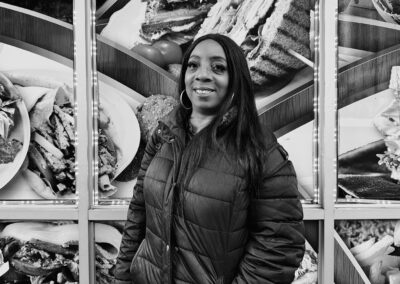
Karen Woodall
Karen Woodall, 48, a high school teacher from Mott Haven, said she was motivated to vote, “because Trump is crazy, it is sad that unfortunately a lot of minorities are only voting for him because they say he keeps it real. ‘Keeps it real’ isn’t a reason to vote for someone. You vote for someone because of what they can do for the country, what they can do for you, your kids, your mother.”
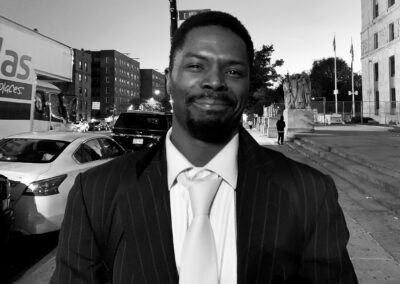
Jamelle James, Sr.
Jamelle James, Sr., 37, is a handyman in the Bronx. He has family and friends in North Carolina who were displaced by Hurricane Helene and denied FEMA funds. “What drove me to vote for Trump is because you are giving all these migrants all this money, $5,000 in food stamps, hotels. You know you're giving them benefits, but we have national disasters going on.”
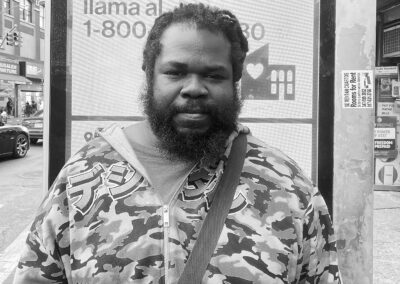
Jackson J.
Jackson J., 32, of Mott Haven was torn about how to cast his vote. “I want to vote for Trump but I can’t support him because of his stance on abortion. I can’t vote for Harris because of her stance on immigration.”
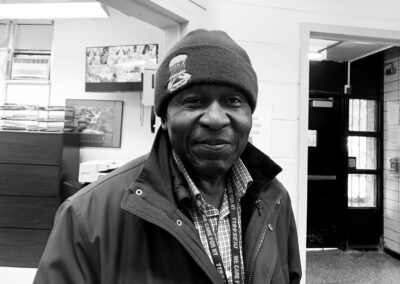
Jamil Adams
Jamil Adams, 55, is a member of 32BJ SEIU. He voted for Harris at the Mott Haven Houses Community Center. Adams says he just wanted people to participate. “Listen, people are supposed to come and vote. That makes sense. Regardless of whether you are a Republican or you are a Democrat, you should come and vote.”
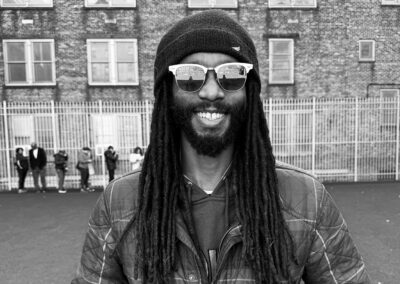
Marcus Williams
Marcus Williams, 38, a mental health counselor, has lived in Mott Haven for eight years. “Like deadass, I cannot do another Trump presidency so that’s number one on my list of hell nos. He didn’t do anything, it was the same Republican jazz. ‘Cut the taxes for the rich people, fuck the poor people.’ The way he moved during the pandemic was crazy and I lost a lot of people during the pandemic."
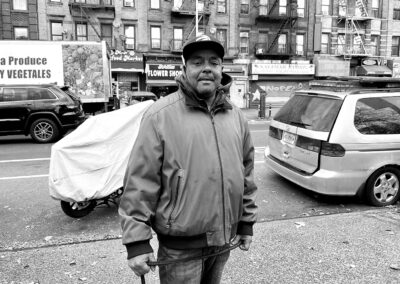
Ray Arena
Ray Arena Photo by Christopher Edwards There are many variations of passages of Lorem Ipsum available, but the majority have suffered alteration in some form, by injected humour.
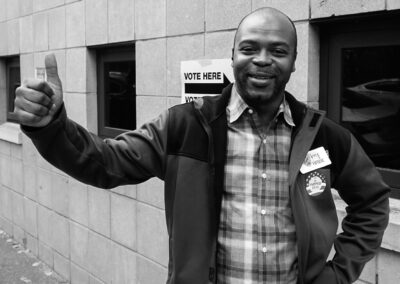
Kamaloudine Adedjouma
Kamaloudine Adedjouma, 44, a radiology tech, voted for Trump. His wife voted for Harris. “I’m very happy today to choose the president I like. To be honest, Mr. Trump is the best guy. Why do I like him? Because he’s very honest. And then he doesn’t like to go to war or that stuff. So I love him so much.”
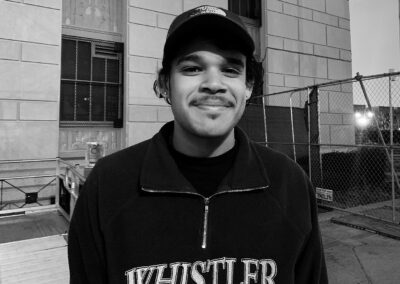
Nelson Martinez
Nelson Martinez, 19, is a sociology major at SUNY New Paltz. He came home to Mott Haven to vote for Harris. “The Democratic Party has constantly said they were gonna fix or try to fix and provide aid and shelters for rehab, detox and for things like that. Because it's gotten out of hand in the streets and they just said they would help them more.”
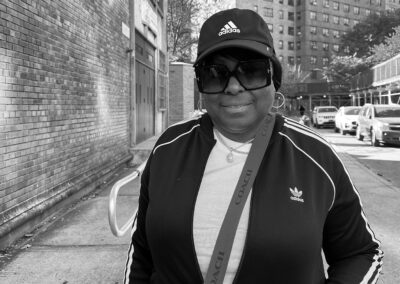
Ms. Yates
Ms. Yates, 68, of Mott Haven, voted at St. Anselm’s.“Harris and Walz are the most intelligent as far as education, and they have the ability to move this country forward in an honest direction. Truth is important and that is what we are looking for.”
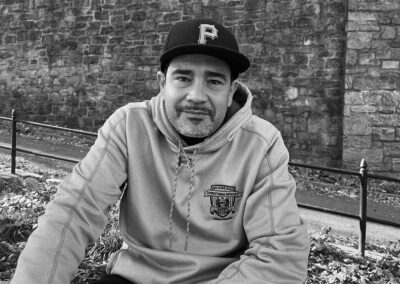
Ariel Hernandez
Ariel Hernandez, 45, a businessman and DJ did not plan to vote. “I can vote, but I’m not too sure who to believe anymore. I don’t know. I’m not really into politics and stuff like that. I would go for Trump, honestly, because I know he doesn’t play certain games and if there’s a war gonna happen, he’s gonna fight back. I know he will.”
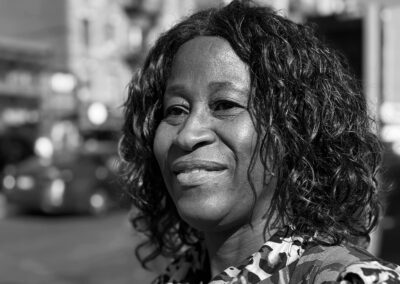
Sally Salamatu
Sally Salamatu, a home health aid, hoped Trump would improve the economy. "Times are difficult now, and I’m voting for Trump. During his presidency, everything was OK. No struggle, but now you struggle a lot. I have to do two jobs to take care of my kids and my family.”
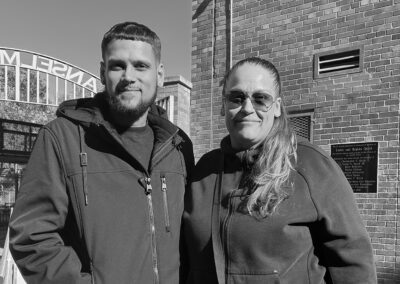
Kelly Moyher
Kelly Moyher, 45 (right), alongside her son, Jonathan Ortiz, 28, said, “I mean, at the end of the day, I feel like there should be a woman president. That's what I feel. It’s gonna divide us, not unite us, with Trump.”
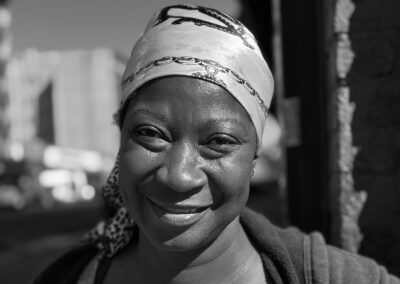
Verna Morgan
Verna Morgan, 58, who works in human resources, said, “We need a change. We need someone who's going to look out for the minorities and the less fortunate people, instead of the rich.”
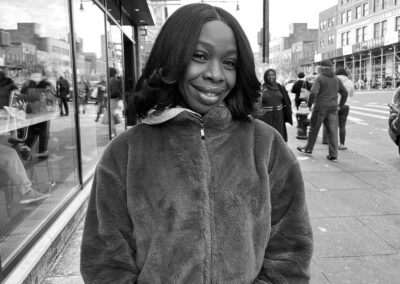
Qadriyyah Wazeerud-Din
Qadriyyah Wazeerud-Din, 47, a paraprofessional from Mott Haven voted for Harris. “Women should always have their rights. New York City has always been open for abortion and I really feel like those rights should not be taken away. I'm definitely with Kamala Harris.”
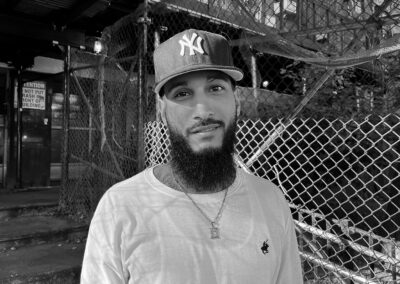
Carlos Aguilera
Carlos Aguilera, 33, a construction engineer, did not plan to vote. “With the way things are going right now with politics, I don’t believe in nothing no more. I just want somebody that’s really for the people, you know, because that's what we need — somebody that’s going to lift up the country back up, and I think Trump will."
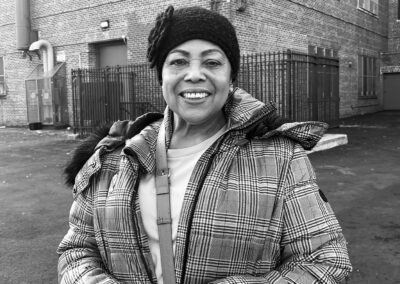
Maria Soler
Maria Soler, 62, voted at PS 65 Mother Hale Academy on E. 141st Street. “I voted for Kamala Harris because she is a woman who comes from a working-class background. She will understand the challenges that women face.”
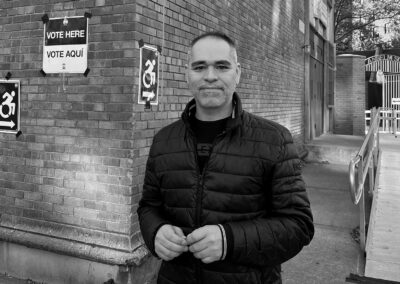
Daniel Camatra
Daniel Camatra, 40, a Mott Haven small-business owner originally from Texas, voted early for Trump. “For me it’s more about who will put the country first because the citizens of the nation overall need more attention,” he said. “To me it wasn’t just about voting for Trump, it's more about the team that is surrounding him and the policies that they are proposing."
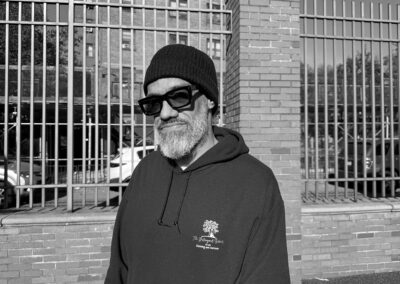
Richard Guadeloupe
Richard Guadeloupe, 51, is an assistant teacher. A Bronx native, he voted for Kamala Harris. “The politicians, they sound like criminals, and it’s disturbing. What we want, what we need, we’re not gonna get. They’re not going to keep their promises as they say. I’m tired of the talk. I’ve been here in The South Bronx all of my life and we need to see change.”
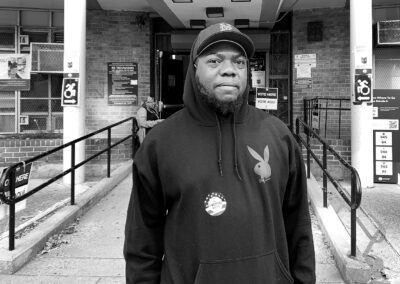
Dontay Revels
Dontay Revels, 32, of Mott Haven, said “I just want to see a woman in office. And we've never had a woman in office. Just that alone, aside from Trump being a menace to society, a woman going against him and doing what she needs to do is very inspiring and I think it's something that we need to see.”
* Trending Towards Purple *
Between 2016 and 2024, the margin between Democratic and Republican votes in the Bronx widened. An analysis of NYC Board of Elections data for each election district shows that while the Bronx remains heavily Democratic (blue), it has seen a slight increase in Republican (red) vote share in the 2024 elections, compared to previous years.
2016: Trump v. Clinton
2020: Trump v. Biden
2024: Trump v. harris
* DEMS STILL DOMINATE, BUT DOWN BALLOT RESULTS SHOW REPUBLICAN GAINS *
More Bronxites voted for GOP state senate and Assembly candidates in '24 than in '20.
Republicans also gained as a percentage of the vote.
Fewer voters came out in '24 than in '20.
After the election, Bronx Democrats have been soul-searching while Republicans look to build on inroads they made among voters. Valerie Dowret and Dawn Kikel interviewed Republicans, Erin Maher, Dawn Kikel and Usha Sookai interviewed Democrats for a sense of where the Parties are headed.
* A Party Grows *
* A Wakeup Call *
* AN UNCERTAIN FUTURE *
The Bronx Prepares
* * * * * * *
The Hunts Point Food Distribution Center Anticipates Rising Prices
BY MRWA ABBAS AND FRANCES SACKS
Hunts Point Produce Market. Photo by Frances Sacks.
If the Trump administration follows through on threats of mass deportation and tariffs, vendors could see higher prices - and so could consumers.
Set apart from the rest of the neighborhood, the Hunts Point Food Distribution Center is situated in its own cul-de-sac called “Food Center Drive.” While technically open 24 hours a day, it only really comes alive in the dead of night – a procession of behemothic diesel trucks begin their nightly crawl to the Hunts Point Produce Market at 10 p.m., the Fulton Fish Market Cooperative at 2 a.m., and the Hunts Point Cooperative Market around 5 a.m. Inside of each of these markets an apparent chaos reigns: forklifts emerge and retreat from every direction, hagglers throw up their arms, and bare food gleams from haphazardly stacked crates.
In reality, the Food Distribution Center operates according to long established rituals – market veterans weave through forklifts with ease, haggling is informed and even tongue-in-cheek, and a team of inspectors roam the place all night to make sure food is kept pristine.
But deportations could disrupt the balance. Officially, everyone at the Hunts Point Food Market is legally authorized to work. But according to the Center for Migration Studies, the workforce of New York State currently includes 470,100 undocumented workers, and 70% of New York State’s undocumented labor force consists of workers in warehousing, distribution, fulfillment, and agriculture.
“It’s really clear that immigrants play an important role in all aspects of the food supply chain,” said David Dyssegaard Kallick, director at the Immigration Research Initiative at the Economic Policy Institute. “If there’s truly any kind of mass deportation, you can expect increased prices and decreased availability.”
Kallick explained that nearly all of the farm laborers in the country — the people picking fruit, milking cows, and harvesting crops — are immigrants. For years, farm owners have been eager to attract more workers and have made efforts to entice U.S. citizens into these roles.
However, it’s not just about wages.
“There are also issues like housing, the challenges of migratory work, and questions about where workers’ children would go to school,” he said.
Hunts Point Produce Market. Photo by Frances Sacks.
Alfredo Gomez, an operations manager for one of Baldor’s main fish suppliers, Pierless Fish, contemplated the situation amid the bustle of the fish market.
“We have employees that have been working here [at the market] for over 20 years and unfortunately they weren’t able to fix their status here. But…it's so much dedication and time they have given to the companies.”
Milton Rodriguez, owner of Randall's Restaurant. Photo by Mrwa Abbas.
Despite this, small business owners like Milton Rodriguez, who has owned Randall's Restaurant since 1994, doesn’t anticipate his business being impacted. Known for its Dominican cuisine and located about a mile from the Food Distribution Center, Rodriguez’s restaurant serves many Food Distribution Center workers and sources all its ingredients directly from there.
“If I hire someone without papers, I have to pay them the same as someone with papers. So, to me, it’s better if someone comes with papers,” said Rodriguez. He also expressed optimism about the economy, adding that he believes Trump will fix it, which he hopes will lead to lower prices for his business.
The economic logic behind a major deportation program is that it would free up more jobs for U.S. citizens, who by virtue of their citizenship status are more likely to advocate for proper pay and working conditions. Employers will no longer get to choose between exploitable migrant labor and more expensive American labor.
However, Kallick predicts that American labor would not fulfill the gaps left by a decline of immigrant labor.
“If immigrants weren’t doing these jobs, there would undoubtedly be some U.S. workers who would step in,” he explained. “But it would take significant changes to make that happen, and even then, it’s unlikely there would be enough workers to meet demand, especially with unemployment at a historic low in the U.S. It’s not clear where millions of new workers would come from.”
On Nov. 25, Trump announced plans to impose a blanket 25% tariff on goods from Canada and Mexico, along with a 10% tariff on goods from China. This comes after the fiscal year 2023, when the value of U.S. agricultural imports exceeded that of exports. And plenty of those imports – blueberries from Chile, bell peppers from the Netherlands, beef from Australia, and fish from Nova Scotia – came through the Hunts Point Food Distribution Center.
The Fish Market
Antonio Oliveri is a co-owner of Seatide Fish Market, a company that’s been in his family for three generations, and speaks with the fluency of someone who’s been around the business his whole life. He explained the potential impacts of tariffs on his industry, estimating that around 30% of his company’s fish is imported. One of his best sellers is salmon, much of which comes from Canada.
“From what I've heard from my shippers,” he said, “their export cost is gonna go up, the freight is gonna go up, our import cost is gonna go up.” And shipping costs are already unusually high.
“Things are a little tricky right now because of Ukraine with Russia and Israel with Palestine. The boats that normally bring in our product can't pass through Israel. So it's taking another 10 to 14 days for that freight to get here. Every extra day that it’s on the water, it's costing more money– more fuel, more expense for the crew,” Oliveri explained.
At the fish market, it is immediately evident how sensitive buyers are to price changes.
Early on a Thursday morning in December, Robert Pedott, owner of Eastchester Fish, inspected a fresh looking assortment of rockfish. He’s been shopping at the market for 25 years.
“What are we doing on the rock today?!”
The fishmonger replied with $8 a pound, and Pedott was unimpressed.
“When your guy down the street who is normally less is higher, I’m like ‘ok, we’re going aggressive.’ I woulda liked $6. It's a lot of belly, not a good yield.” He explained his rubric: “Look at the gills, the eyes. Look at the rigor. A couple of these guys are fat. We like northern fish, not southern fish.”
The American fishing industry is deeply entangled in the global economy. “I can tell you stories where boatloads of products are caught here and sent to China or Iceland, processed there, and sent back here and it's still cheaper to do it that way,” said Bobby Weiss, president of Blue Ribbon Fish. He estimates that between 80% and 90% of seafood in the United States is imported, which is corroborated by USDA findings.
Behind the scenes at Master Purveyors, Inc. Photo by Frances Sacks.
The Meat Market
At the Hunts Point Cooperative Market – the meat market component of the Food Distribution Center – purveyors remained relatively unconcerned about tariffs. Manager Bruce Reingold noted that “we don't buy anything other than probably some New Zealand lamb that’s flown in. Most everything else is domestic.”
Mark Solasz, vice president of Master Purveyors Inc., which provides restaurants such as Peter Luger with their famous steak, sees the logic in Trump’s tariffs.
“Other governments might give their farmers tax breaks to use their land for raising lamb, whereas our farmers may not have the same kind of tax breaks,” he said. With the help of these subsidies, “they sell their product cheaper so we buy products for maybe half the price. Maybe the Trump administration doesn't want that disparity to be so big.”
Solasz doesn’t anticipate any major ramifications of mass deportations on his business.
“I don't think he's just gonna make it one blanket thing,” he said. “They're gonna have to have agents driving 20 square miles to the one place to find three people or six people. It's gonna be diminishing returns.”
Buyers check out produce at the Hunts Point Produce Market. Photo by Frances Sacks.
The Produce Market
Representatives at the Hunts Point Produce Market were unwilling to discuss the prospect of tariffs and deportations, and were adamant about blocking these questions from being posed to their vendors. However, the majority of fresh fruit and vegetables consumed in the U.S. are imported, and the largest share of these imports come from Mexico and Canada.
Stephanie Tramulatola, a third-generation produce supplier from A&J, shed light on the subject indirectly, reporting that the international market for produce continues to grow.
“Things were more seasonal in the past, but now the consumer wants this food all year round,” she said. Imports from South America have been especially important, because “seasons are swapped between North and South America.”
And over the phone, Antonio Calandrella, who works in sales at Coosemans New York Inc., a specialty house inside the Produce Market, spelled out how tariffs will impact consumers.
“We have stuff coming in on flights, we have stuff coming in on boats, and we have stuff coming in on trucks,” he said.
When the shippers have to pay more money to get their goods across U.S. borders, “then that is going to be reflected in our initial course of goods. Something that would cost us $12 would now cost us, let's say $12.45.”
Someone, of course, has to eat that cost, and that responsibility falls on the consumer. “We have to charge more money, which makes the restaurant pay more money, which probably the end result of that is that the restaurants are going to have to raise their prices,” he said. “It's a trickle down effect. And at the end, result is always going to end up at the cost for the consumer.”
Photo by Frances Sacks.
* * * * * * *
NYC Labor Looks Warily to Trump Administration
By Tiara Brownie and Sam Murphy
Construction workers make improvements to a stretch of Grand Concourse near East 149th Street, Dec. 17, 2024. Photo by Tiara Brownie.
Rank and file diverge from leadership in some New York unions.
Donald Trump courted working-class voters, often remarking that he would be “much better for the unions,” even donning a safety vest, climbing into a garbage truck and briefly making french fries at a McDonald’s in Pennsylvania. But union leaders and workers in the Bronx are split about what the new administration will mean for them.
In an August interview with Elon Musk, Trump said he’d summarily fire striking workers.
“They go on strike, I won’t mention the name of the company, but they go on strike, and you say, “That’s OK, you’re all gone,” said Trump. “You’re all gone. So every one of you is gone.”
In response, the United Auto Workers filed an unfair labor practice charge with the National Labor Relations Board.
For the first time in 28 years, the International Brotherhood of Teamsters did not endorse the Democratic candidate, and Teamsters General President Sean O’Brien spoke at the Republican National Convention.
Labor leaders the Mott Haven Herald surveyed are nervous about what the incoming administration will mean for workers. However, some rank-and-file members hope the incoming president will uplift the country, including unions.
“The messaging from both [Trump] and those that he’s chosen to surround himself with indicates that we are definitely going to have an uphill battle to ensure workers’ rights do not go backward in this country,” said Lucia Gomez, political director for the NYC Central Labor Council, AFL-CIO.
The Communications Workers of America, whose Local 1101 counts 4,000 Bronx members, endorsed Vice President Kamala Harris the day after President Joe Biden dropped out of the race.
“On one side is a candidate who has always taken the side of corporate interests and is advancing a policy agenda for another term that would destroy our union and take away fundamental workers’ rights,” wrote the CWA National Executive Board, referring to Trump. But some members had different ideas.
“With Trump in office, I believe he could reduce inflation, thereby enabling union workers to live more comfortably,” Santeramo said while on a job replacing cable under the Grand Concourse at 149th Street. “He will do great things for union workers.”
Local 1101 Chief Steward Matthew Rivera. Photo by Tiara Brownie.
“Shockingly, we were very split; there’s a lot of Trump supporters in the union,” said Matthew Rivera, chief steward for Local 1101. He worries about the Trump administration’s disregard for union workers, referencing the Trump and Musk podcast comments about firing striking workers.
Nick Santeramo, a telecommunications construction worker, asserts that Trump policies will benefit union workers. “With Trump in office, I believe he could reduce inflation, thereby enabling union workers to live more comfortably,” Santeramo said while on a job replacing cable under the Grand Concourse at 149th Street. “He will do great things for union workers.”
Telecommunications worker Nick Santeramo in The Hub. Photo by Tiara Brownie.
Ezequeel Delgado, a Verizon construction worker, feels similarly to Santeramo. “Trump has so much power and influence in the media that he wouldn’t want to fail at anything, especially by not doing right by the union workers,” said Delgado. “He will do great things for union workers, just like he would do for America overall.”
A few blocks away at Lincoln Hospital, members of the New York State Nurses Association couldn’t see things more differently.
“We support candidates that support our views and our values of caring for our communities and our patients,” said Sonia Lawrence, a director at large for New York State Nurses Association and critical care nurse at Lincoln Hospital. “We endorsed [Harris] because she support[ed] things that NYSNA stands predominantly for, like access to care and protection of worker’s rights.”
On Dec. 3, NYSNA held a speak-out on behalf of midwives at Jacobi Medical Center and North Central Bronx Hospital. A congregation of midwives, hospital employees, and local politicians banded together on a frigid early winter day to advocate for a new contract. They want pay parity with other local hospitals, an end to chronic understaffing and support for their efforts to combat higher-than-average maternal mortality rates. Midwives at Jacobi and North Central have been without a contract for 17 months.
Ezequeel Delgado, a Verizon construction worker. Photo by Tiara Brownie.
* * * * * * *
Yemeni Americans Who Fought Trump’s Muslim Ban, Now Voted For Him
By Marina Samuel
Sammy Ali, 63, Bodega employee in Mott Haven, Originally from Yemen. Photo by Mrwa Abbas.
A shift among a well organized and growing merchant community.
Yemeni-American bodega owners in the Bronx, once key organizers of a major strike against then-President Donald Trump’s travel ban in New York, say they’ve shifted their support towards him. South Bronx Yemeni community members cited issues like crime, the economy, and the Israel-Gaza war as reasons for the change.
Despite prior vocal criticism of the Trump administration, most Yemeni Americans interviewed in Mott Haven and Melrose after the 2024 election said they voted for president-elect. While no comprehensive polling focused on Yemeni American voters in New York, national exit polls by the Council on American-Islamic Relations (CAIR) showed Jill Stein receiving over 50% of the Muslim vote, with the rest evenly split between Trump and Vice President Kamala Harris.
"Everything is getting expensive; we can't live. When Trump was president, everything was a little better," said Sammy Ali, an employee at a deli in Mott Haven, who noted that he and his family all voted for Trump.
The Yemeni community vehemently opposed one of the signature policies of Trump’s first presidency, organizing a bodega strike in 2017 and closing their shops for a day in protest against the “Muslim Ban,” a series of executive orders prohibiting immigration to the United States from seven predominantly Muslim countries, including Yemen.
"Yemenis are not a small community anymore,” said David Mozalem, owner of 2020 Deli and Convenience in Melrose. “We all shifted [towards Trump].”
Yemeni bodega owners organized a rally outside Brooklyn Borough Hall in protest of President Donald Trump’s Muslim travel ban, Feb. 2, 2017. Photo by Ben Fractenberg/DNAinfo.
At a Republican donor event in September, Trump vowed to reinstate a travel ban against countries he described as “terror infested areas like the Gaza Strip.” Despite these threats, several people who spoke to the Mott Haven Herald and Hunts Point Express did not believe that the travel restrictions would go into effect under his presidency.
“This time around, it seems more geared towards illegal immigration from South America, the Caribbean, and Africa but I don't think it stops at just them. It's a continuation of the same efforts and mindset of the 2016 administration,” said Gabriel Hernandez, community and external affairs manager of Yemeni American Merchants Association (YAMA). Still, he acknowledged that many members nonetheless threw their support to Trump.
“Yemenis are not a small community anymore,” said David Mozalem, owner of 2020 Deli and Convenience in Melrose. “We all shifted [towards Trump].”
YAMA estimates there are approximately 50,000 Yemenis in the city with approximately 6,000 bodegas owned by Yemeni-Americans, more than half of the city’s total.
Mozalem, who has owned businesses for over 20 years, said he voted for Trump because his store was the target of three crimes in the past year. Inone incident,an assailant attacked Mozalem’s 16-year-old son, who was working as a cashier. Mozalem said he wasn’t satisfied with the police response to the three incidents.
NYPD surveillance sign hanging in Mike’s Family Deli in Melrose. Photo by Marina Samuel.
“Trump loves business,” said Ali Syed, owner of Brook Ave Convenience. His sales had been down in the last 2 years and attributed it to the poor economy during Joe Biden’s presidency. In his first presidential election as a citizen, Syed cast his vote for Trump.
His sentiments are shared by many, according to research conducted by the Council on Islamic American Relations.
“In an August poll, CAIR found that 29% of Muslim voters identify as fiscally conservative, and another 25% identify as socially conservative,” explained Robert McCaw, director of CAIR’s National Government Affairs Department. The survey, conducted before the election and analyzed by University of West Georgia researchers, included responses from over 2,500 American Muslim voters. While not all American Muslims are Arab, Pew Research Center estimates that at least 41% of Muslim Americans identify as white, which includes those who describe their race as Arab, Middle Eastern, or Persian/Iranian.
The number of fiscally conservative Muslim voters has remained relatively consistent over the past decades, with a consistent 25-30% of Muslims voting for the Republican party, McCaw, from CAIR explained. He attributes a slight increase in support for the Republican Party this election more to frustration with President Biden and Vice President Harris, rather than an embrace of the Trump movement.
Before 2001, Republican politicians courted Arab-American voters, whose entrepreneurial and socially conservative values aligned with the party. But after 9/11, the U.S. invasions of Iraq and Afghanistan, the targeting of Arab and other Muslim Americans for detention, registration and government surveillance of Muslim religious institutions launched by President George W. Bush’s War on Terror, that the community’s relationship with the party faltered.
An American flag hangs in a Mott Haven bodega, Dec. 17, 2024. Photo by Mrwa Abbas.
The Israel-Gaza war has been a huge deciding factor for Muslim and Arab voters in this election, with 81% Arab Americans identifying the conflict as a deciding factor in their vote, according to the Arab American Institute. Meanwhile, the Democratic Party has made conflicting statements of calls for a ceasefire while increasing military aid to the country.
Elzopide, an employee at Life Saver’s Deli in Mott Haven, who asked to only be referred to by his last name, said he voted for the first time along with his family for Trump.
“Trump said he was going to stop the war in Gaza. I don’t think Kamala meant it.”
Despite Trump’s stated support for Israel, many interviewees felt alienated by the Democratic Party’s failure to end the crisis in Gaza.
“I started to hate the Democrats because of Biden,” said Mo Obq, an employee at Good Mood Smoke and Deli, who did not vote.
Hernandez, of the Yemeni American Merchants Association said the turn to Trump was a measure of the community’s desperation. “What are we supposed to do if the one administration that's been here consistently doesn't make any steps forward?”
* * * * * * *
Environmental Groups Shift Focus In Search of Climate Solutions
By Marina Samuel and Tatyana Gonzalez
Traffic snakes up the Major Deegan Expressway through Mott Haven. Photo by Cherry Salazar.
South Bronx activists are concerned about the future — but they’re ready to keep fighting for clean air and more.
South Bronx environmentalists predict the Trump administration’s priorities will pose a significant threat to their work. In response, several groups say they’ll direct efforts toward the state, pushing for climate-related funding, legislation and regulations.
President-elect Donald Trump “signaled to frontline communities, Black and Brown communities, environmental justice communities… that the environmental racism that we've had to endure on a daily basis doesn't matter,” said Matthew Shore, senior organizer for South Bronx Unite, the environmental justice group.
According to a study by the Brookings Institute, the first Trump administration took at least 74 actions that attacked environmental policy, including pulling the United States out of the 2015 Paris Agreement, supporting “energy dominance,” weakening environmental regulations, and reducing the budgets of federal departments, including the Environmental Protection Agency.
Project 2025, a blueprint for governing development by the conservative Heritage Foundation, characterizes environmental regulations as “costly, job-killing” and suggests that the EPA needs to be restructured and its size reduced. Although Trump has distanced himself from Project 2025, some of its architects are current aides and allies of the incoming president.
Federal money powers several South Bronx organizations via the Environmental and Climate Justice Community Change, Environmental Justice Collaborative Problem-Solving Cooperative Agreement, and the Environmental Justice Government-to-Government programs — all funded through President Joe Biden’s Inflation Reduction Act. In 2023, local groups that include the Bronx is Blooming, Nos Quedamos, Youth Ministries for Peace and Justice, and Bronx River Alliance received over $1.6 million in EPA funding.
“If this funding is cut or it changes we would need to scramble,” said Siddhartha Sanchez, executive director of Bronx River Alliance, “potentially scaling back interconnected programming that is impactful and needed in our communities.”
The Trump administration’s threat to restrict unspent funds of the Inflation Reduction Act also puts at risk initiatives like the EPA’s Thriving Communities Grantmakers. That program provides federal funds to large institutions to then distribute to small community-based organizations.
Fordham University, the local grantmaker for the EPA region covering New York, New Jersey, Puerto Rico, and the U.S. Virgin Islands, is dispensing a $40 million grant through its Flourishing in Community program. Since the application period opened this fall, it received more than 200 applications from front line organizations that would not otherwise have the capacity to receive federal funding, Salaman explained.
“We are unsure of the future of the grant funding. As of right now we have been told to continue as is,” said Wanda Salaman, long-time South Bronx activist and Advisory Board Chair of Flourishing in Community.
South Bronx Unite applied for a $20 million Environmental and Climate Justice Community Change Grant from the EPA to finance the first two phases of it’s Mott Haven-Port Morris Waterfront plan.
“States do have a lot of power to continue advancing, cleaning our air, cleaning our water, protecting our climate, protecting lands,” said Alok Disa, senior researcher and policy analyst for Earthjustice.
New residential buildings sit along the Port Morris waterfront. Photo: Marina Samuel.
While the funds from the Community Change Grant are not at risk, South Bronx Unite worries future federal funding could be in jeopardy. That group and others are looking to Albany for leadership.
“States do have a lot of power to continue advancing, cleaning our air, cleaning our water, protecting our climate, protecting lands,” said Alok Disa, senior researcher and policy analyst for Earthjustice.
Earthjustice and the Point CDC are pushing Gov. Kathy Hochul to implement the Advanced Clean Act before the year ends. Earthjustice filed 200 lawsuits against the first Trump administration and they expect to take legal action against Trump again.
“If they are going to choose to unlawfully or carelessly attack the regime of environmental protections, we are ready,” said Disa.
In 2019, New York State passed the ambitious Climate Leadership and Community Protection Act (CLCPA) which requires the state to reduce its carbon emissions by 40% by 2030 and 85% by 2050. Despite the landmark legislation, New York State’s implementation of the bill has been slow and is set to miss the 2023 deadline, further worrying climate advocates.
“I don't think it's a priority in the sense that we are not moving fast enough. We're not moving big enough for the scale of the crisis at hand, at this point,” said Eunice Ko, deputy director of the New York City Environmental Justice Alliance.
South Bronx Unite and the Point CDC noted that the stark reality of the Trump administration may actually spur greater engagement in climate and environmental justice.
“While it's harder to fight against these people, it's easier to grow power to fight against these people,” said Dariella Rodriguez, director of community development of the Point CDC.
“Regardless if the Democratic Party or the Republican Party won the presidential election, we know that in tremendously oppressed communities, frontline communities, we would have still had to organize,” said Shore.
* * * * * * *
NYCHA Chair Predicts Trump Administration Will Bring “a Federal Dollar Decrease Over Time”
By Hayden Betts, Additional Reporting By Dawn Kikel
NYCHA workers clean up leaves at Patterson Houses, Dec. 17, 2024. Photo by Hayden Betts.
Hard choices loom for public housing.
Over pastries and coffee in a gilded Midtown event hall, NYCHA Chair Jamie Rubin warned Congressman Ritchie Torres that federal funding for social services programs in New York State could face cuts under the incoming Donald Trump administration.
“It seems pretty clear that there's going to be at least an effort to extend the tax cuts,” Rubin said. “Once they figure out that they have to pay for all of that, it's likely to be severe cuts in areas that affect, disproportionately, people in the state – like Medicaid and SNAP and so forth.”
Rubin did not specifically predict cuts to the New York City Housing Authority
in his remarks at the Citizens Budget Commission Breakfast on Nov. 18, but his references to a potential “federal dollar decrease,” “hard choices that have to be made,” and his invocation to Torres to exercise “his enormous influence” to shape funding decisions in New York State suggest that he is concerned that the housing agency’s federal funding could be under threat.
According to budget documents, in 2022 NYCHA relied on federal subsidies for 59% of its $4.2 billion operating budget. That figure includes about $1.4 in federal subsidies allocated for NYCHA to administer Section 8 housing and $1 billion to operate traditional Section 9 housing.
"Many, many of my constituents are rent-burdened, and they depend on Section Eight and other programs. And so there's a concern about losing funding for those programs. We're keeping a close eye in terms of the city level as to what we may lose financially from the federal government, and how we as a city government may have to fill in those gaps to address those issues,” Salamanca said.
NYCHA complexes fill the skyline in the South Bronx. Photo by Cherry Salazar.
In an interview with the Mott Haven Herald, District 17 Assemblyman Rafael Salamanca echoed Rubin’s concerns about the possibility of decreased federal funding for subsidized housing in New York City.
"Many, many of my constituents are rent-burdened, and they depend on Section Eight and other programs. And so there's a concern about losing funding for those programs. We're keeping a close eye in terms of the city level as to what we may lose financially from the federal government, and how we as a city government may have to fill in those gaps to address those issues,” Salamanca said.
NYCHA officials are also grappling with a substantial backlog of capital improvements, operating under a significant funding deficit that hampers its ability to maintain safe and habitable conditions for its residents. In 2023, NYCHA announced that it required $78.3 billion over 20 years to address critical repairs, including the replacement of broken elevators, faulty heating systems, and deteriorating kitchens and bathrooms.
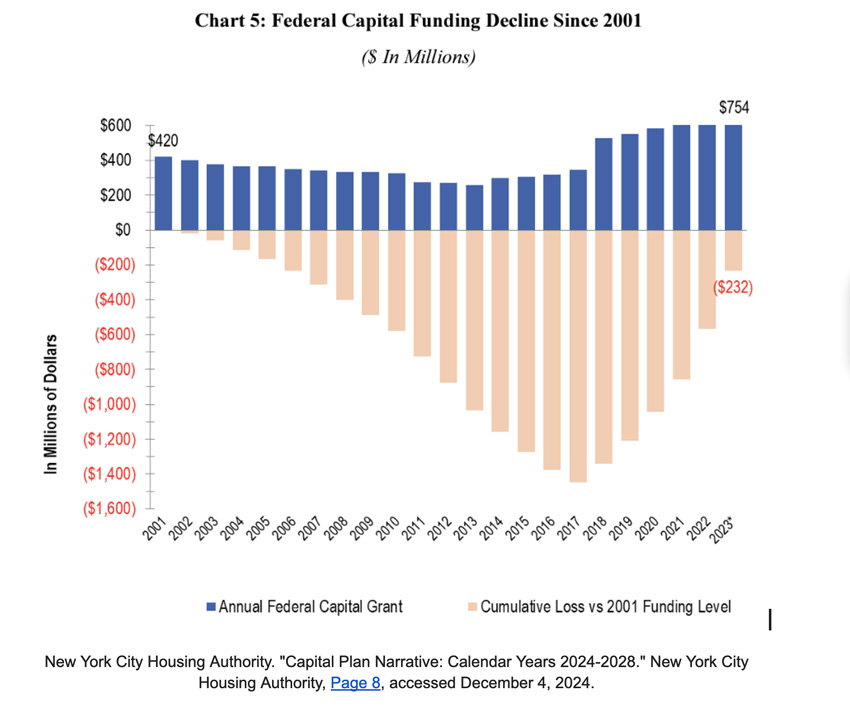
This chronic underfunding has led to neglect across NYCHA properties. For instance, at Patterson Houses in Mott Haven, residents have faced persistent heating failures, forcing many to rely on unsafe methods like ovens and space heaters to stay warm. NYCHA properties have also faced persistent elevator outages.
Others Recommend a Wait-and-see Approach
Bronx Borough President Vanessa Gibson urged caution. “We can't be enemies to the administration. We have to work with them, because at the end of the day, they could be punitive and cut our funding again."
Danny Barber, chair of NYCHA’s Citywide Council of Presidents and a resident of Melrose’s Jackson Houses, also recommended restraint in assessing the potential impact to NYCHA of the Trump administration and its HUD Chair nominee, Scott Turner.
“It’s hard to say what impact they’ll have until they get here,” Barber said. Turner, a former NFL player and Texas state representative, championed opportunity zones in his position as head of the White House Opportunity and Revitalization Council during Trump’s first term.
Barber emphasized that support for public housing does not always follow conventional partisan lines.
“The Obama administration is what brought the privatization of public housing,” Barber said, referencing Obama’s Rental Assistance Demonstration program which opened the way to NYCHA transferring control of more than 15,000 units to private Section 8 landlords. “[Obama] was supposed to have been the savior that was coming to rescue the people from the claws of the Republican regime.”
Barber pointed out that the Trump administration’s first term maintained federal funding levels for public housing, which he noted were comparable to or better than prior administrations. “If you look at the numbers, they were closer to a dollar on the dollar for public housing,” Barber said. “That’s more than some Democrats have historically put up, right?”
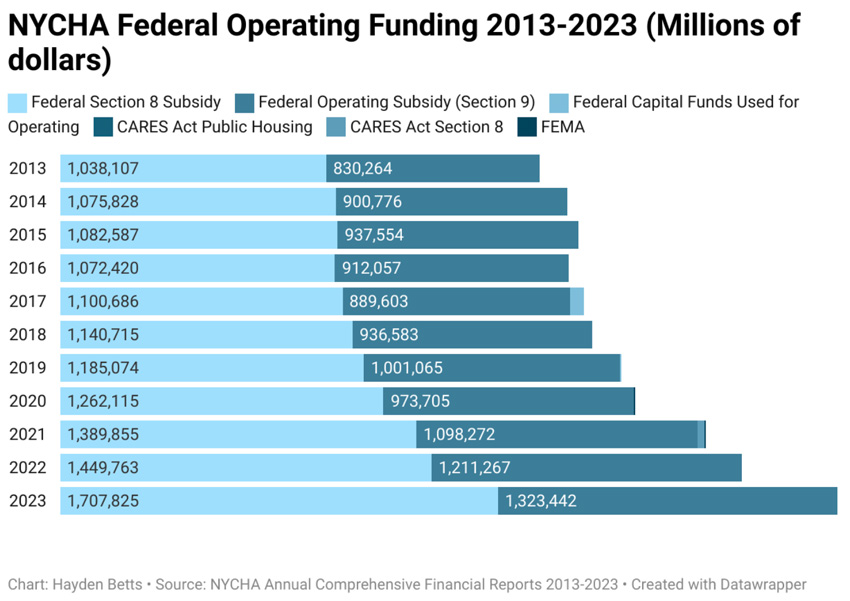
The first Trump administration did not bring cuts to either NYCHA’s federal operating funding or its federal capital funding. That administration also saw the implementation of a federal monitor to ensure NYCHA’s compliance with a consent decree to address systemic issues like lead paint, mold, and broken heating systems.
As Turner’s nomination heads to the Senate, Barber is keeping an open mind. “He deserves a fair shot to see what he actually does,” Barber said.
Congressman Torres emphasized the stakes of properly capitalizing NYCHA at the Citizens Budget Commission Breakfast.
“As far as I'm concerned, NYCHA is too big to fail. Most people who live in public housing would be homeless without it,” Torres said.
* * * * * * *
Immigrant Groups Brace Amid Deportation Threats
By Rebecca Raghunath and Rosie Thomas
A pedestrian walks by a mural honoring immigrants at Third Avenue and East 146th Street, Dec. 17, 2024. Photo by Dawn Kikel.
A community on edge prepares for the worst.
Kabir Ahmed sat behind a foldable desk at Darou Salam, a mosque and Islamic school in Melrose, helping two newly arrived immigrants from West Africa get work authorizations. Meanwhile, a group of men gathered on the carpet, organizing a stack of letters to send to employers. Many of them live in shelters with their families, and these letters hold some hope for establishing themselves in the city.
“They need help, that is why we are here,” said Ahmed.
Men, women, and families travel from every corner of the city to pray and access services at the mosque on Elton Avenue.
At Darou Salam they find more than spiritual sustenance: Ade Oparinde, the mosque secretary, Ahmed, and his team connect migrants to legal services, employment opportunities, ESL classes, and citizenship test study guides. The majority of migrants arriving from West Africa apply for asylum, Ahmed said.
"Many, many of my constituents are rent-burdened, and they depend on Section Eight and other programs. And so there's a concern about losing funding for those programs. We're keeping a close eye in terms of the city level as to what we may lose financially from the federal government, and how we as a city government may have to fill in those gaps to address those issues,” Salamanca said.
Since the election, the men who come to pray have been chattering, worrying what will happen if Donald Trump’s promised deportation drives occur. Oparinde hopes to allay their fears.
“It's not going to happen overnight. You know it, America takes a process,” said Oparinde, who immigrated from Nigeria over thirty years ago. “Here we try to educate them. They bring their fears, but with the experience of people who have been here for a long time, they let them know how things work here.”
Darou Salam is one of many grassroots organizations across the South Bronx trying to both calm their members and prepare for the worst.
In a speech to Republicans in Chicago on Dec. 9, incoming President Donald Trump’s “border tsar” and former U.S. Immigration and Customs Enforcement official Tom Homan told Democrats to “get the hell out of the way” of sweeping Republican plans to deport migrants, including the children of non-citizens born in the US.
Grassroots groups prepare
“We have a long four years ahead of us,” said Becky Smith, a social worker at Bronx Legal Services. She is also a member of the steering committee at Bronx Immigration Partnership, a coalition of over 25 community-based organizations. But she added that the groups she works with are trying not to be alarmist.
“There’s already a lot of fear in the community, and there's already a lot of panic that's spreading about what might happen,” said Smith.
Immigrants make up 35% of the Bronx population. According to Pew Research, 2023 saw the number of foreign-born people in the US grow by 1.6 million, the highest one-year increase since 2000. As of 2019, more than half (54%) of the undocumented immigrants in the Bronx had been in the US for over ten years - long enough to establish families, grow communities, and integrate into the economy.
“You don't need Trump to come in and implement these mass deportations because he's already instilled that fear… we hear about people talking about self-deportation,” she said.
Although each of the organizations in the Bronx Immigration Partnership is funded differently, there are also concerns that federal funding for the state of New York may be cut due to its high numbers of residents eligible for public services through PRUCOL status.
“I think we’re very worried about what the Trump administration is going to do in terms of trying to defund different programs that will impact us,” Smith said, adding advocacy groups will provide information clinics to protect the people they serve from scammers taking advantage of the heightened fears.
One of the Bronx Immigration Partnership member organizations, the Mexican American Students Alliance, has been serving Spanish speakers in Mott Haven since 2001, offering educational and afterschool programs, as well as parental support and free legal services.
MASA’s executive director Aracelis Lucero was raised in Hunts Point after her parents immigrated from Puebla, Mexico in the early ‘80s, among the first Mexicans in the neighborhood. Now the organization sees increasing numbers of people from Peru, Ecuador, Venezuela and Colombia—all fleeing civil unrest and authoritarian governments.
MASA served about 10,000 clients in 2023. She says immigrant support organizations suspected Trump would be elected. But what surprised her is the inaction of city officials in response to Trump’s threats.
“I expected a much more public response to ensure that New York City is going to continue to be a sanctuary city,” said Lucero. “To do everything in their power to protect immigrants from federal agencies and not to use their funds to harm immigrant communities.”
MASA will partner with local public schools to disseminate information so people know their rights, she added. MASA staff will be assigned to support families facing deportation. That will be particularly important because there won’t be enough lawyers to meet the need for legal defense.
Alianza Americas, an organization dedicated to defending the rights of migrant communities in North and South America for 20 years, said Trump’s policies would be disastrous.
“Nobody will be safe under the Trump administration, including the five million children who live with an undocumented parent,” said Dulce Guzmán, executive director of Alianza Americas. “Immigrant children and families are preparing for the worst. This draconian effort would cost taxpayers $315 billion, funds that could be better-spent funding initiatives that will improve the lives of all people in the U.S..”
The American Immigration Council estimates a mass deportation operation will cost taxpayers $88 billion every year.
Alianza Americas is preparing by combating anti-immigrant disinformation, and creating community safety plans. “We are preparing to mobilize our membership and other allies to elevate the vital role of immigrants in our communities,” said Guzmán.
Churches on the defensive
Alongside the nonprofit groups, faith communities are on the front lines. Father Frank Skelly remembers the anxiety that hovered over his Melrose congregation at Immaculate Conception Roman Catholic Church during the first Trump administration. Parishioners established a phone chain to alert each other about raids, and photographed incursions by ICE agents, but didn’t obstruct officials.
A parishioner prays at the Church of the Immaculate Conception during El Dia de Guadalupe. Photo by Joe Hirsch.
With a second Trump administration looming, Skelly says similar measures will be needed to protect immigrants, documented or not. He addressed the anti-immigrant threats in his homily on the Feast of Our Lady of Guadalupe on Dec. 12. Dia de Guadalupe is enthusiastically observed in the Mexican American community and Guadalupe is revered as a protector — mother — of the Mexican people.Skelly was incensed that Mayor Eric Adams had met with the new Border Tsar Homan earlier that day to discuss cooperation between the city and federal government to deport undocumented immigrants, ignoring the sanctity of Dia de Guadalupe for the Mexican community.
“Does the mayor not know what day this is?” he said.
But the mosaic of immigrants in the South Bronx is not limited to Latin Americans. Increasing numbers of West Africans have attended mass in recent years, he said.
“Trump has said he has the right to wait outside churches,” Skelly said. “We have people’s addresses on the computer. I will not give access to that.” He was recently found in contempt of court for refusing to provide the address of an immigrant parishioner involved in a car accident to the opposing lawyer.
But any notion of harboring undocumented immigrants in the church longterm is impractical, he said.
Jose Mateo, pastor at another Melrose church providing support for migrants, Centro Cristiano Camino Al Paraiso, said his church will continue to serve as a sanctuary for immigrants, and that it will not cooperate with “ICE or the police,” if they come knocking.
Roberto (a pseudonym), 38, moved to the Bronx five months ago. He saw the church’s open door from across East 159st on Courtland Avenue for weeks, until one day a member of the church invited him in.
“The big thing is having that sense of family in the church,” said Roberto, who washes dishes in Manhattan to send money back to Mexico for his four children. “I live day to day—go to work, go home, go to work, go home.”
Roberto said he worries about deportation, but hasn’t tapped into support services because he doesn’t know where to start.
Community looks out for their own
Some groups with a more general mission say that protecting their neighbors will become more important.
“It’s going to be an ‘all hands on deck’ approach,” said Anthony Jordan, district manager of Community Board 1, including bringing experienced immigration lawyers to teach people about their rights.
“This center will be a resource center. Even if you don’t have your status, we wanted to make sure you still know your rights,” said Jordan. “This community is a melting pot. People come here for their start.”
During the last Trump administration, he recalled, “people were fearful of the rumors of ICE. People couldn’t pay their bills because they were scared to go to the post office. It pushed people back underground.”
Jordan has witnessed increasing desperation in the neighborhood. Last winter some 20 African men aspiring to get work as Uber drivers slept in front of the Melrose Avenue building next to the community board office, waiting to obtain IDs at the state office.
Board 1 intends to use social media “as a platform for fact-finding and dispelling of misinformation.” Jordan echoed Smith’s concerns about scams and exploitation: services that appear to offer free information, but might financially exploit migrants or collaborate with ICE.
Rosa Cohen-Cruz, policy counsel and team leader of immigration services at The Bronx Defenders, is advocating for two bills that would limit cooperation with ICE among law enforcement and state government and employees.
Both bills will be introduced in the New York State Senate in January, she said. The New York for All Act, would prohibit city or state officials from disclosing the immigration status of people they come into contact with. The bill had 31 co-sponsors when introduced in the state senate last year, none of them Republicans, and failed to make it out of committee. In the Assembly, none of the bill’s 64 co-sponsors were Republicans. It was referred to the Ways and Means committee but not voted on by the full Assembly.
Establishing a clear separation between public entities and ICE is necessary, Cohen-Cruz said, “because many undocumented people fear that anything that's sort of connected to the state will cause that information to be shared with ICE. No one is saying that New York State can completely ban ICE from doing their job here,” but, she said, the bill would disincentive law enforcement agencies from “doing ICE’s job for them.”
The second bill, the “Dignity Not Detention Act”, would terminate contracts between government entities and ICE, essentially prohibiting prisons and jails from acting as an overflow or extra capacity for immigration detention facilities. There are currently three active contracts between New York jails and ICE, which would also be terminated by the bill.
“We have a worst case scenario, but you can’t live in fear,” said Marco Saavedra while waiting tables at lunchtime at La Morada, the restaurant on Willis Avenue his family has run since 2009. The Saavedras have been outspoken supporters of Mott Haven’s immigrant community.
Marco Saavedra. Photo by Joe Hirsch.
“Every administration has preyed on immigrants,” including the Obama administration, under which deportations were common, he said. In the face of Trump’s policies, Saavedra is putting his faith in the wisdom and vigilance of the immigrant support community.
“The Bronx is so strong,” he said. “Our values, our community work is already there.”
With additional reporting by Joe Hirsch.

